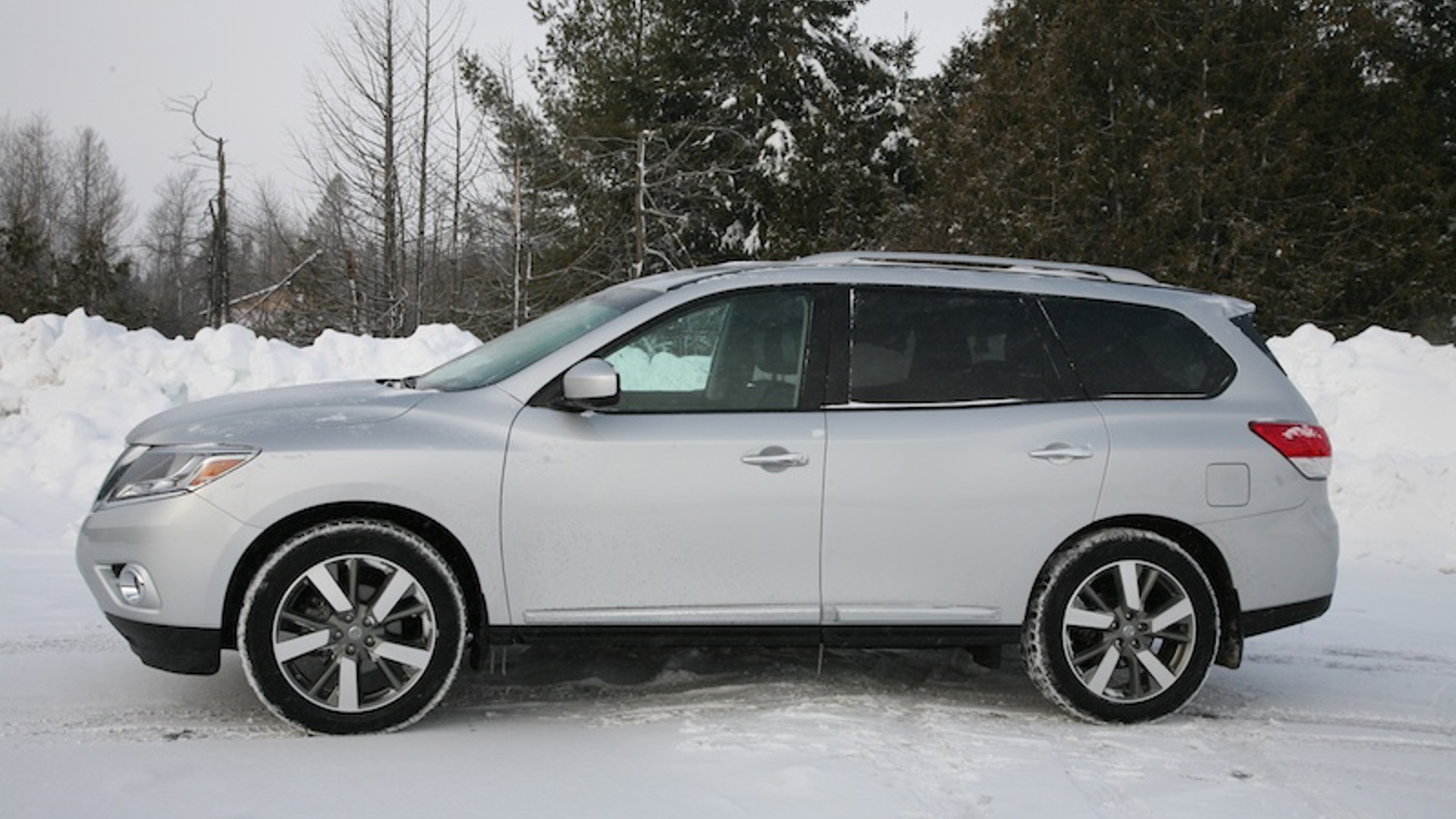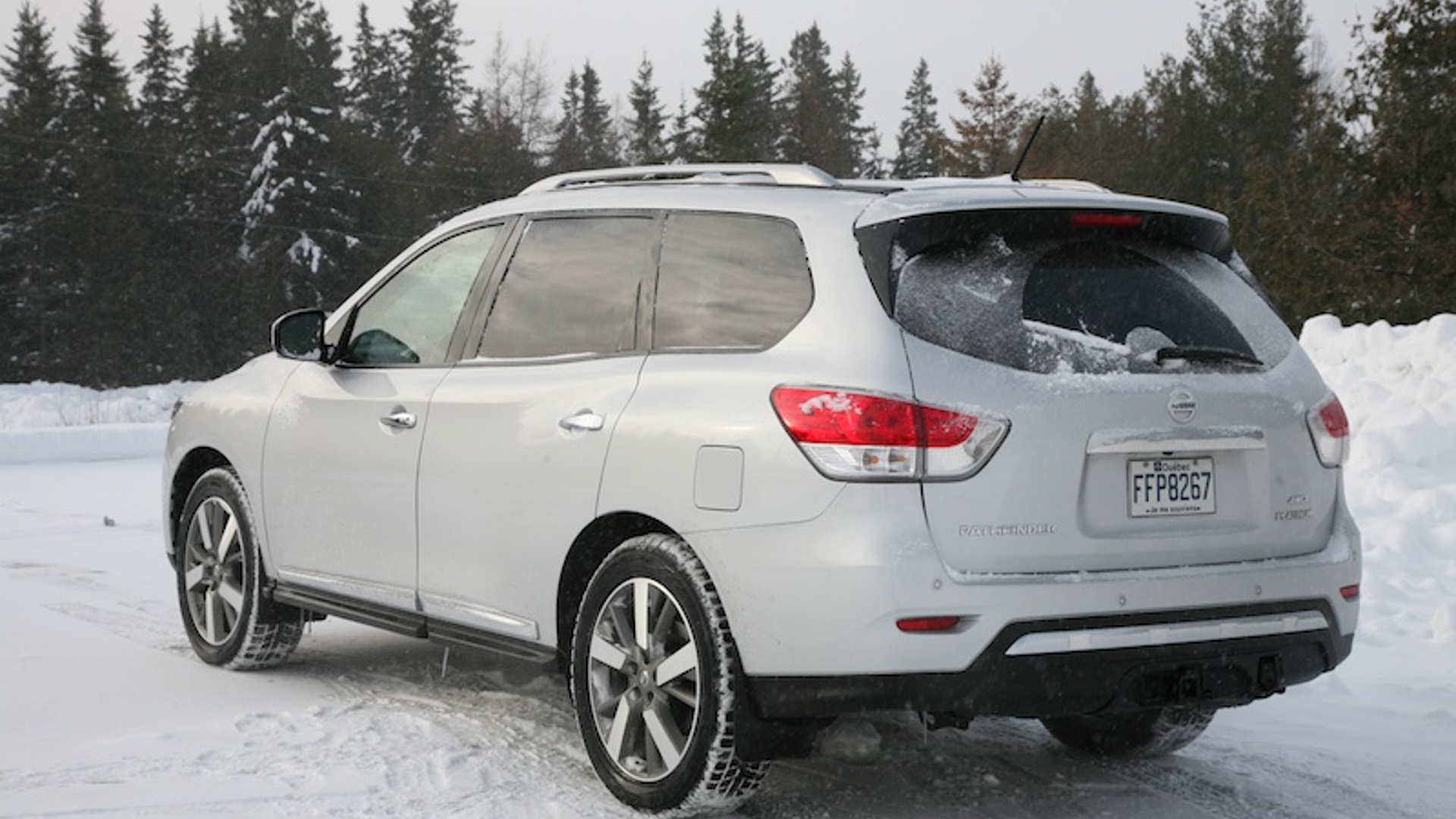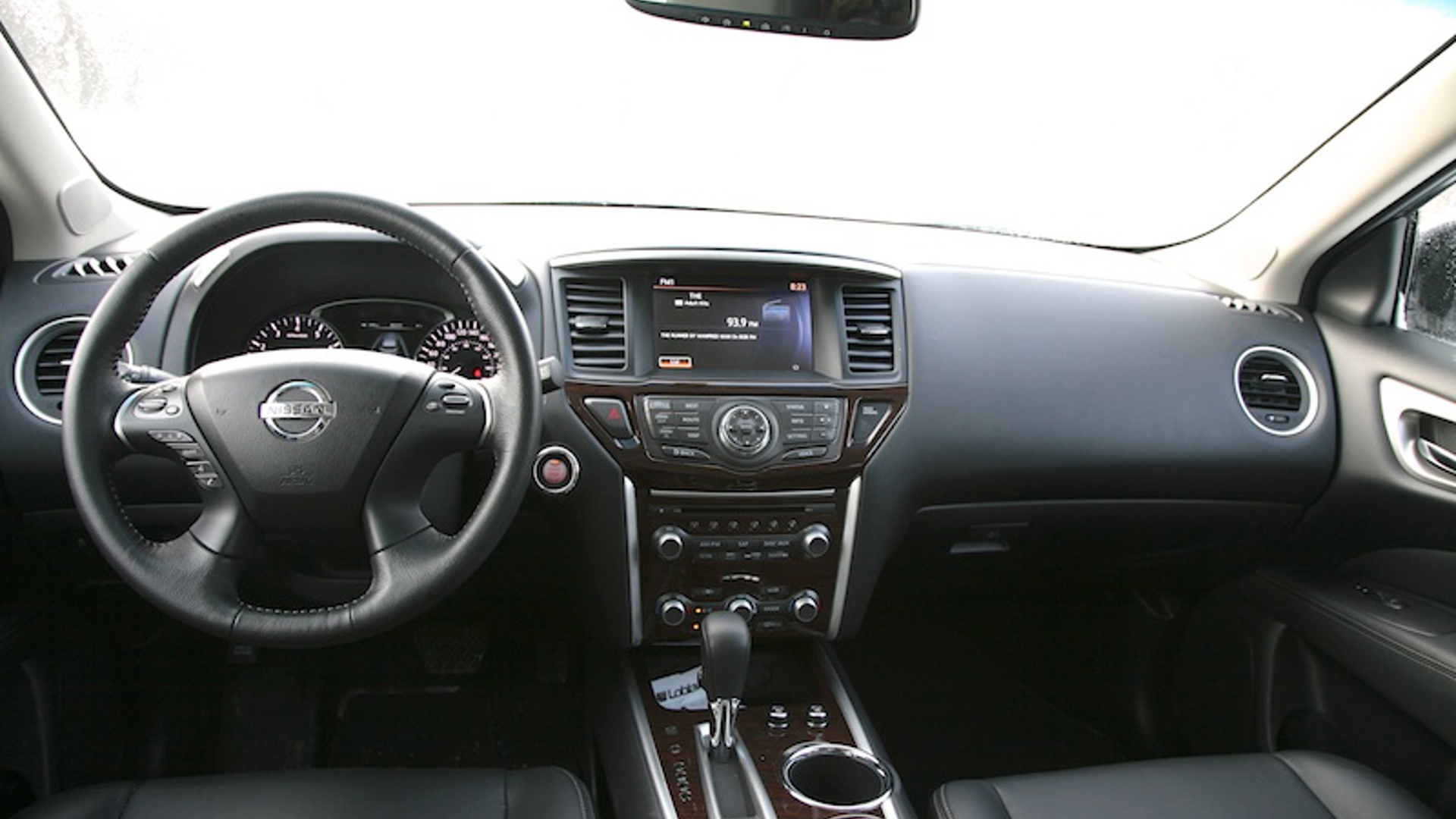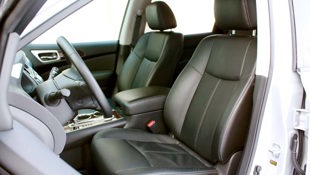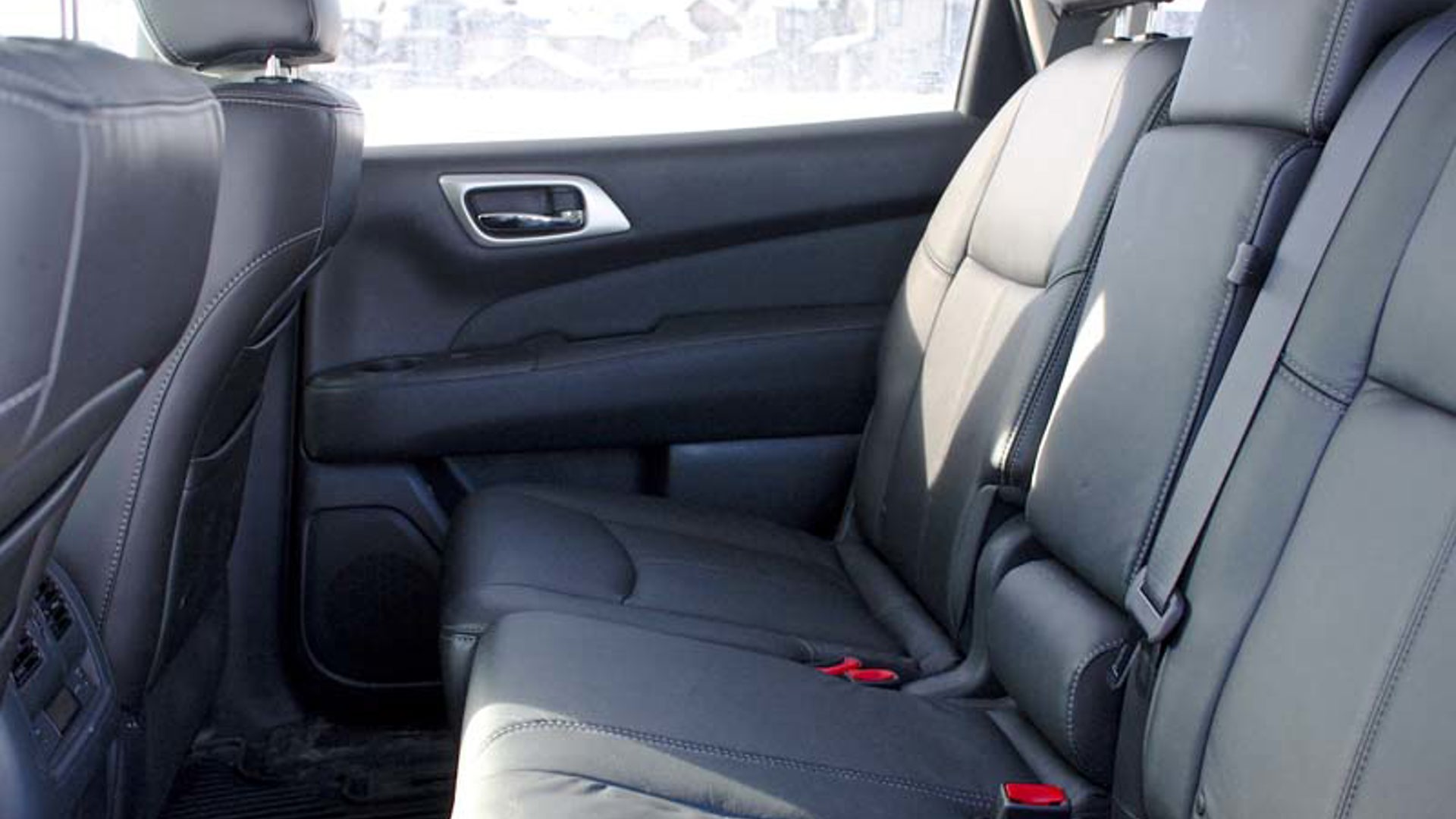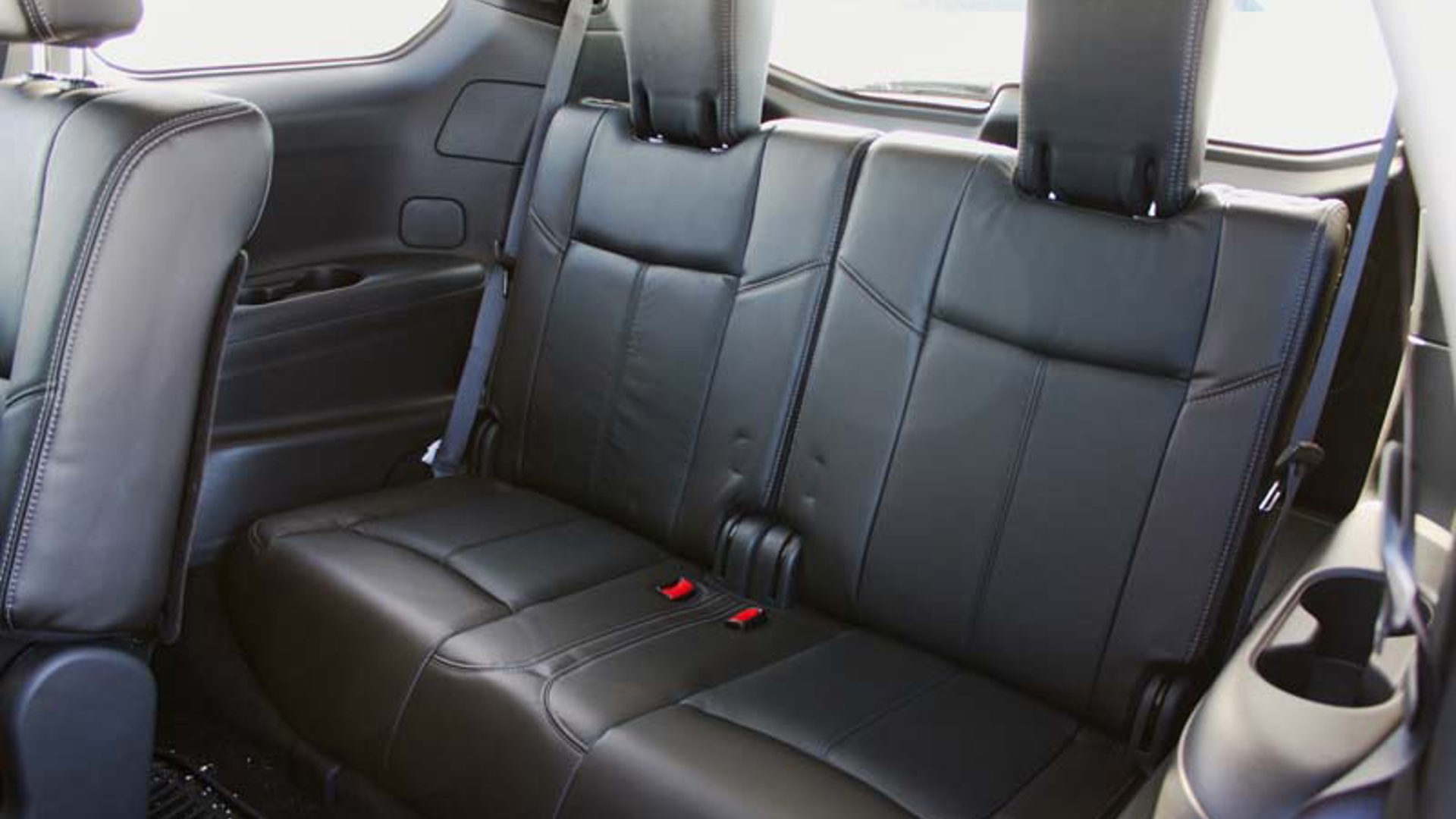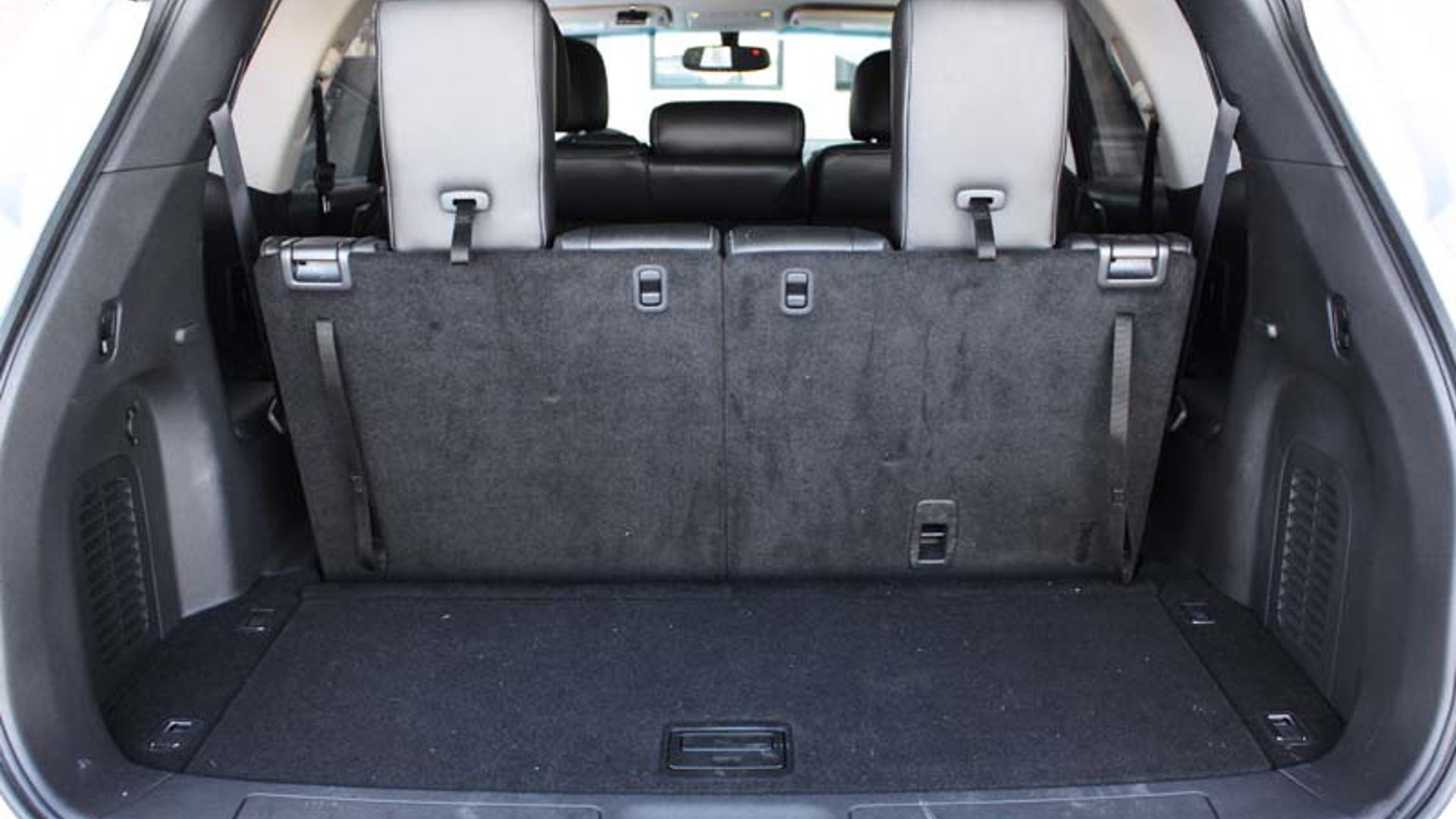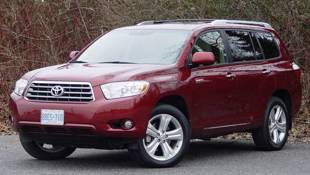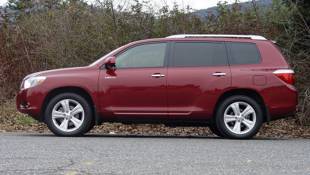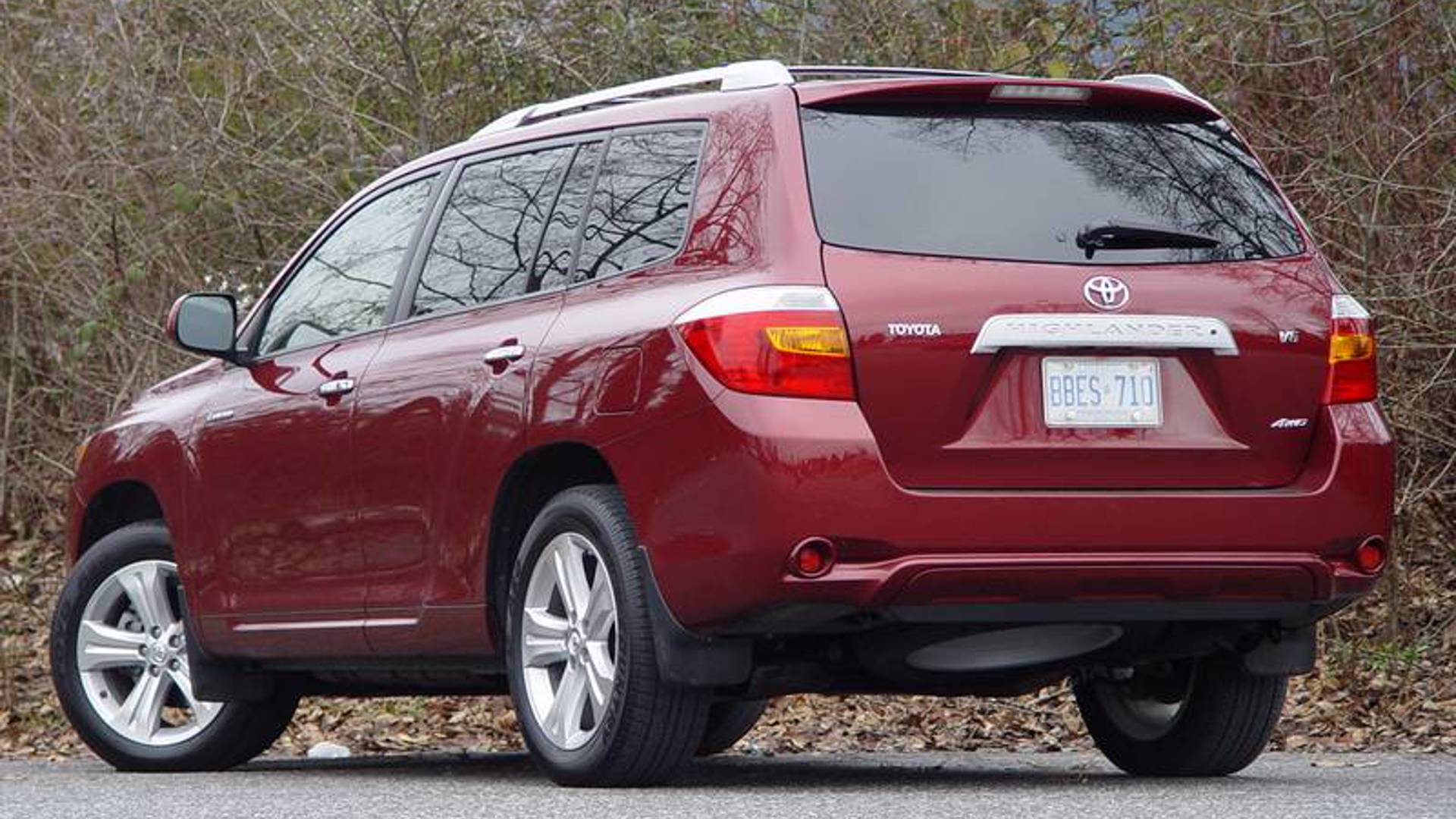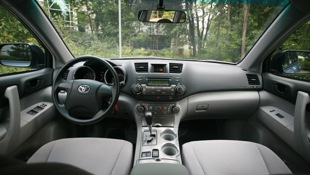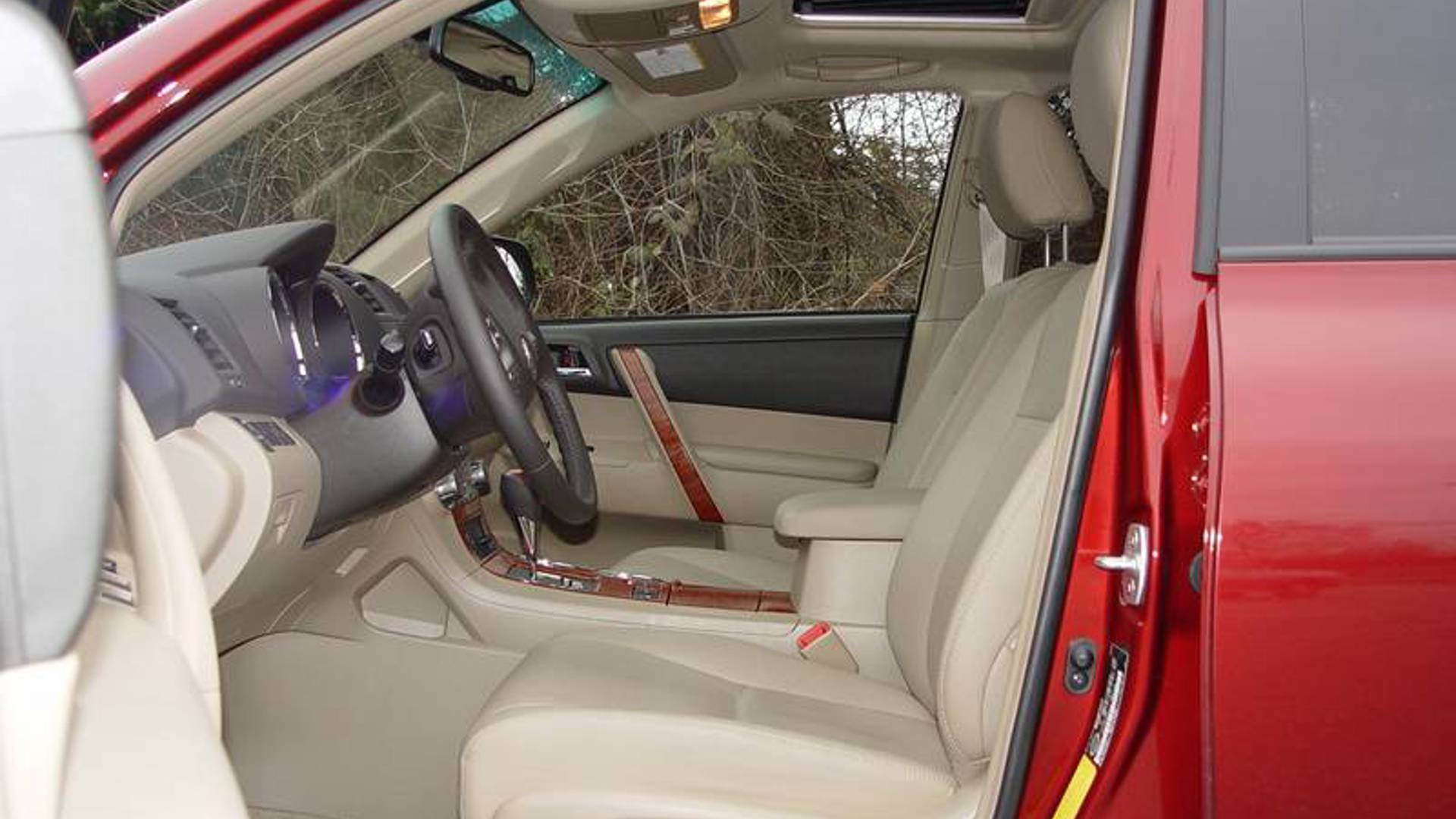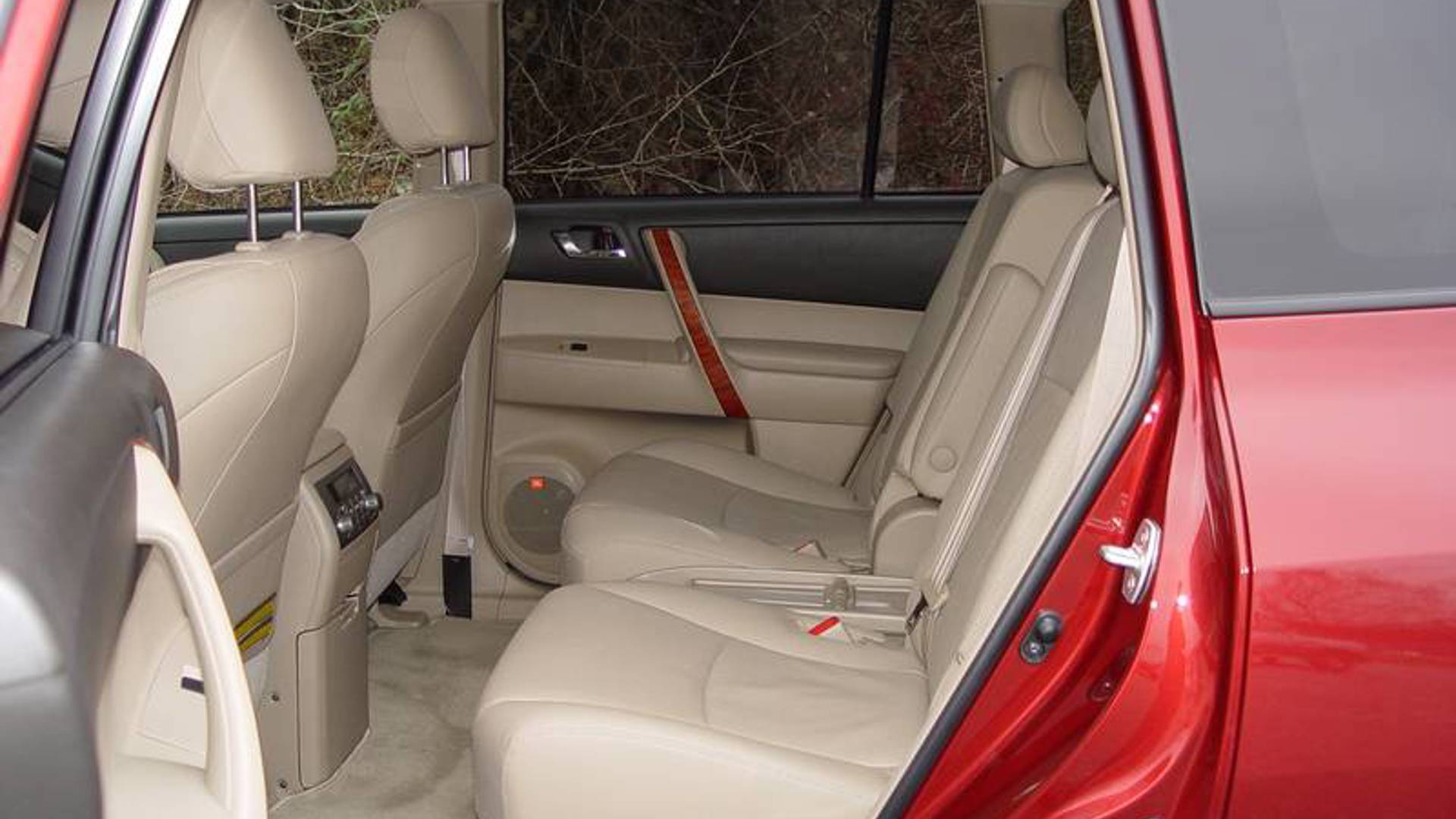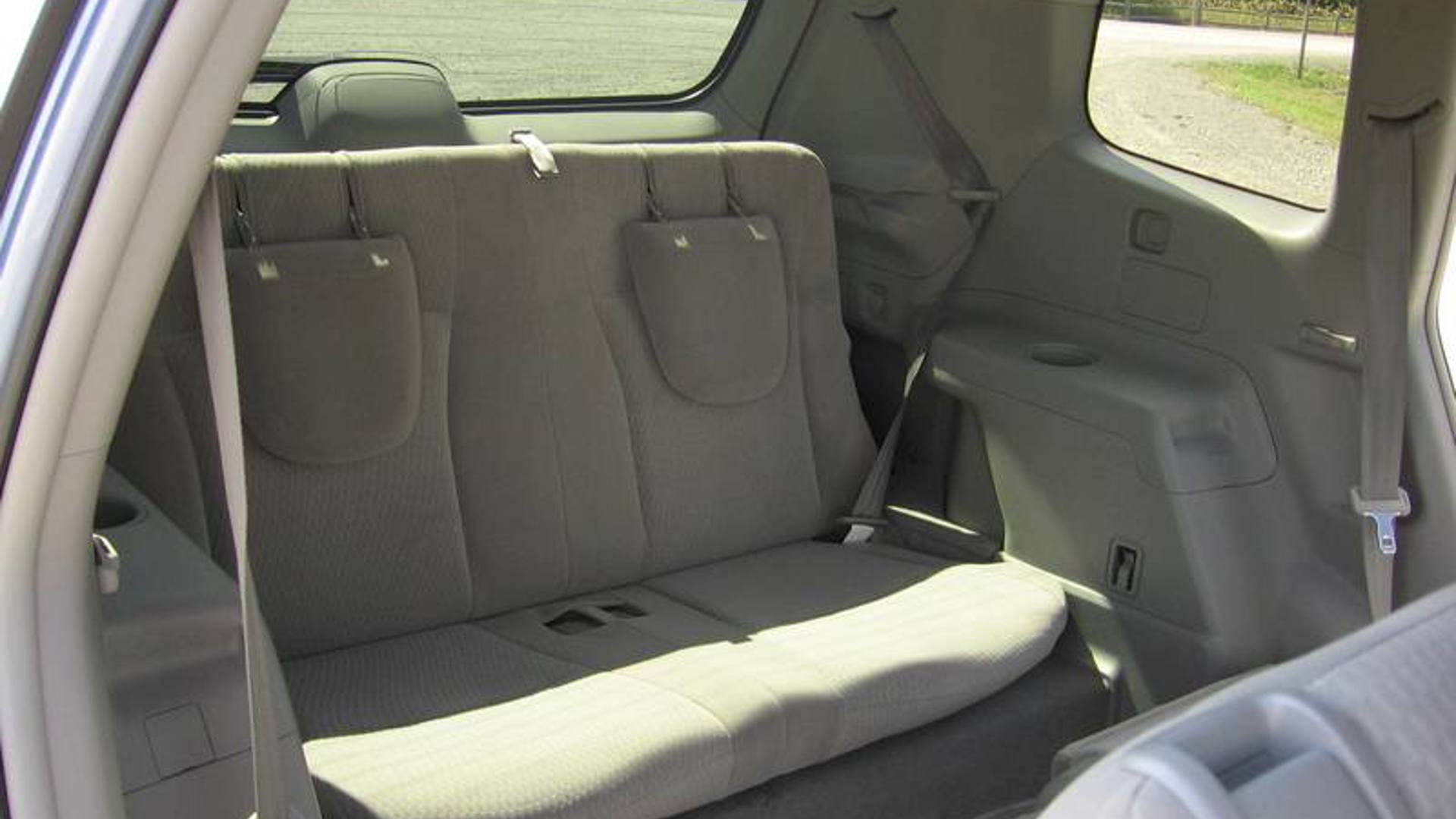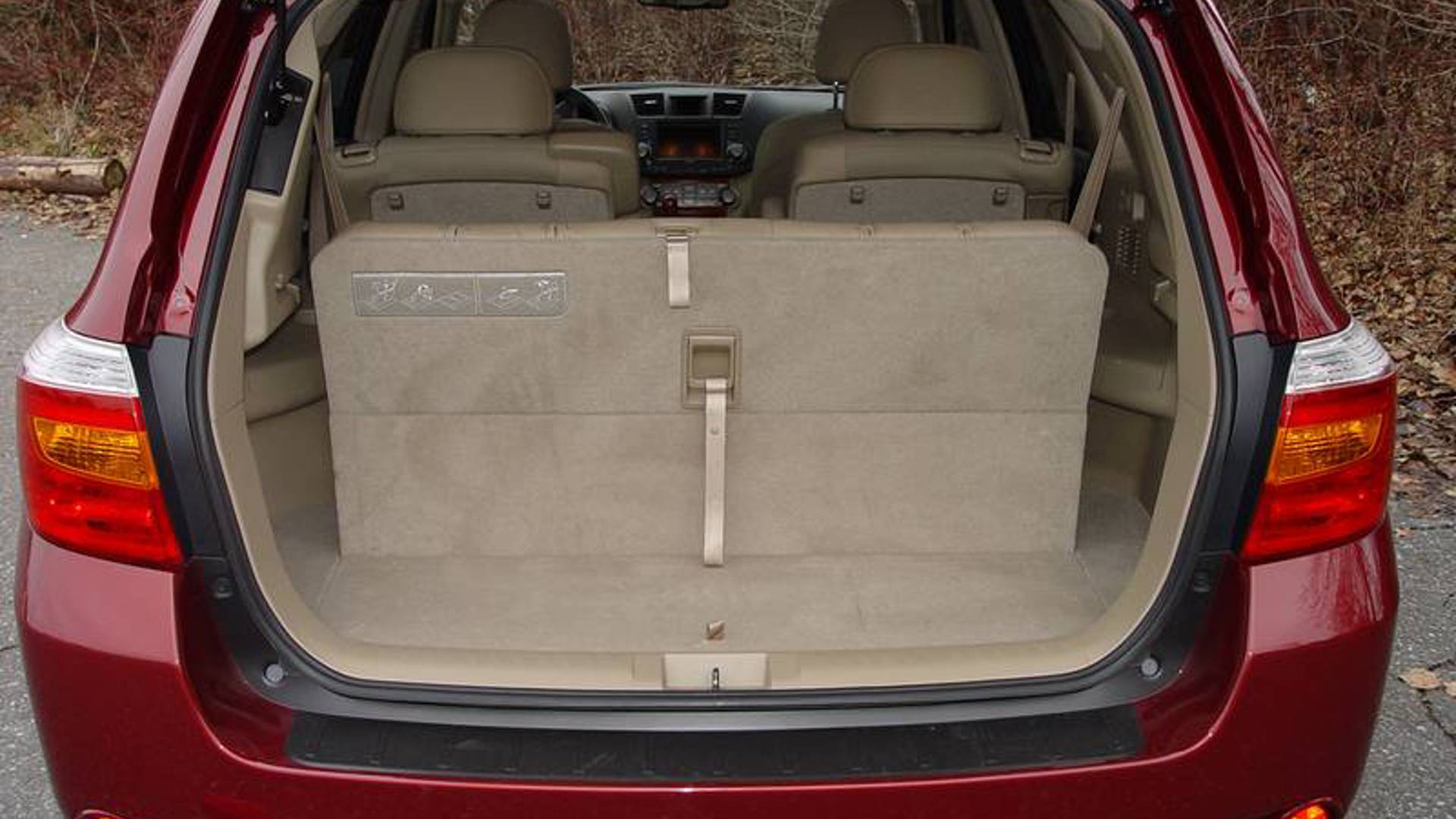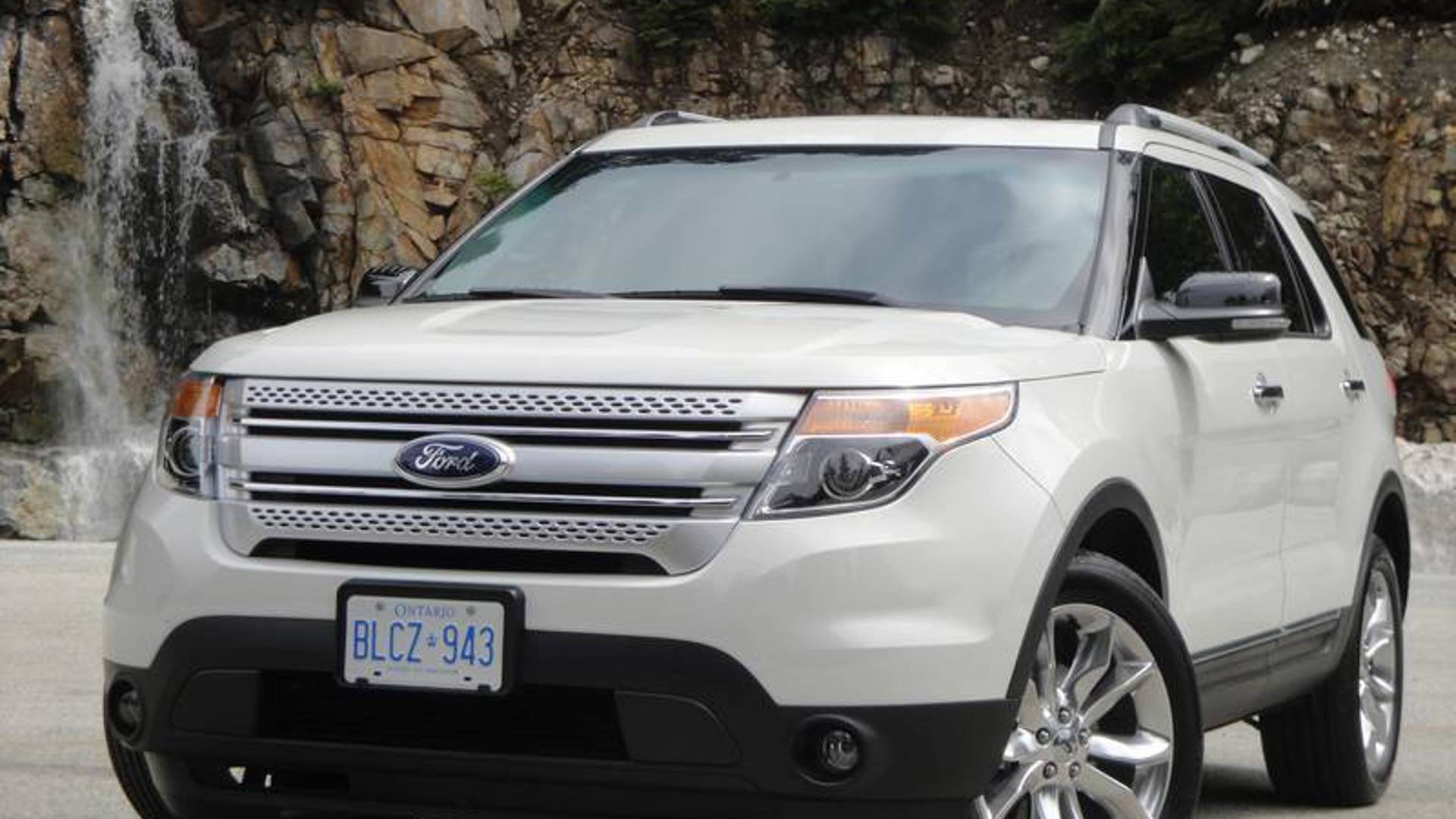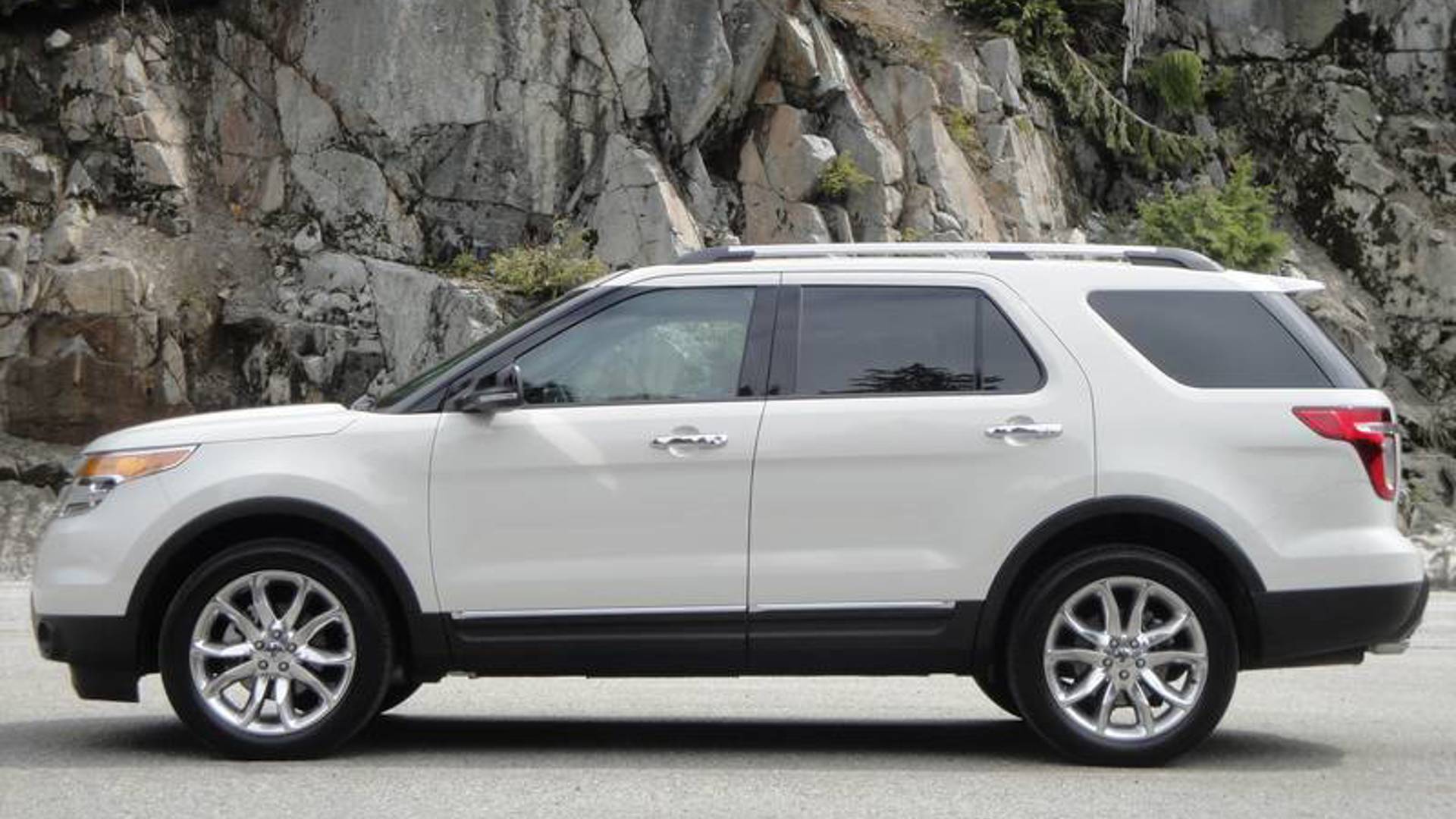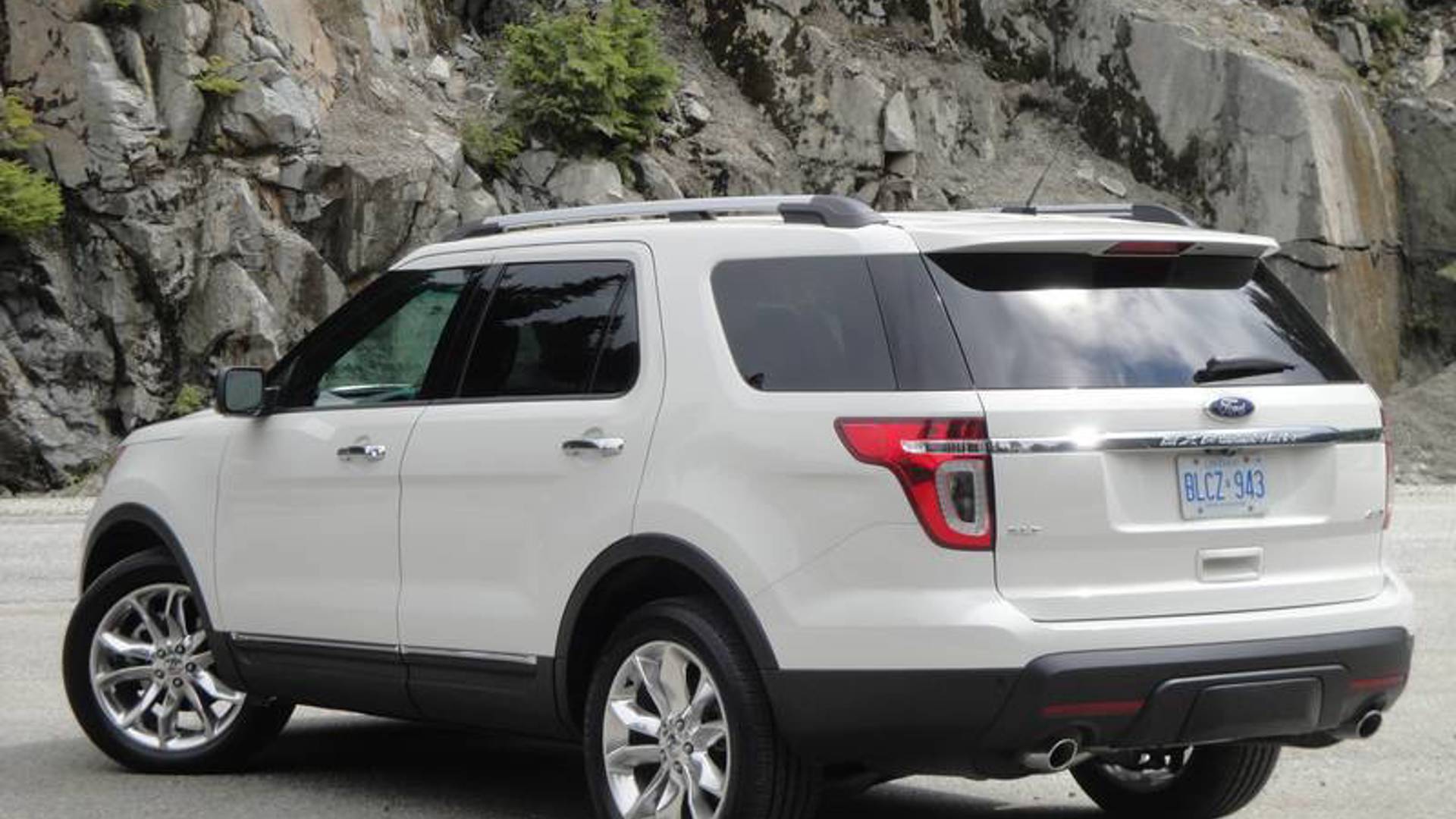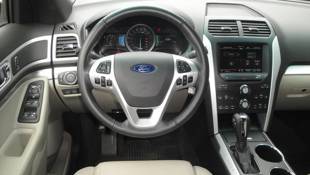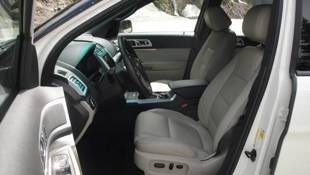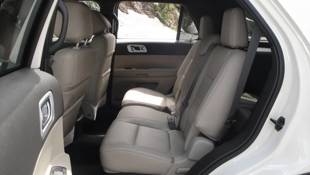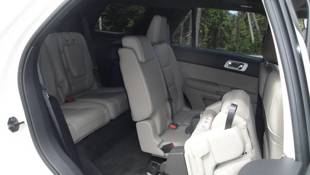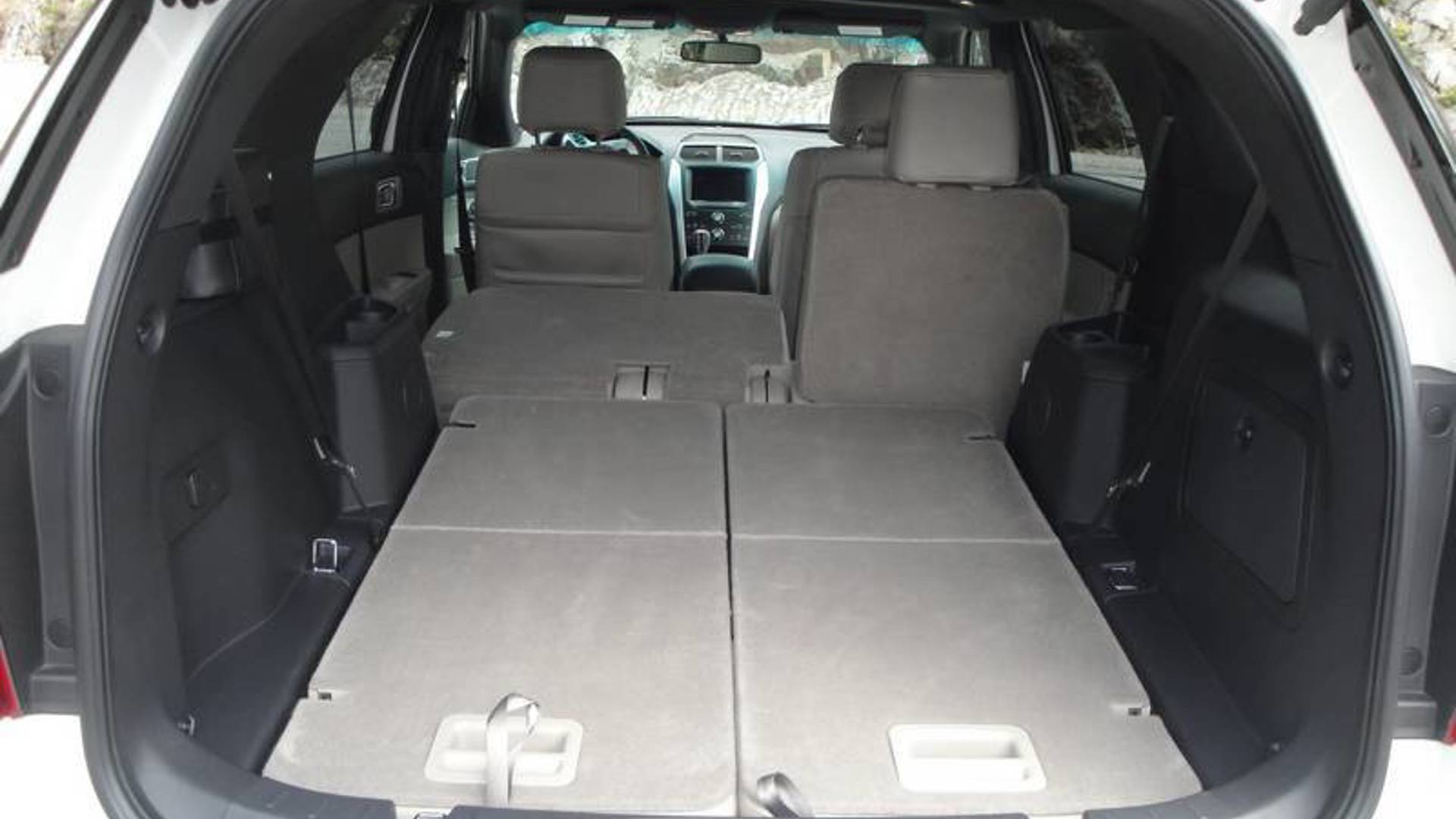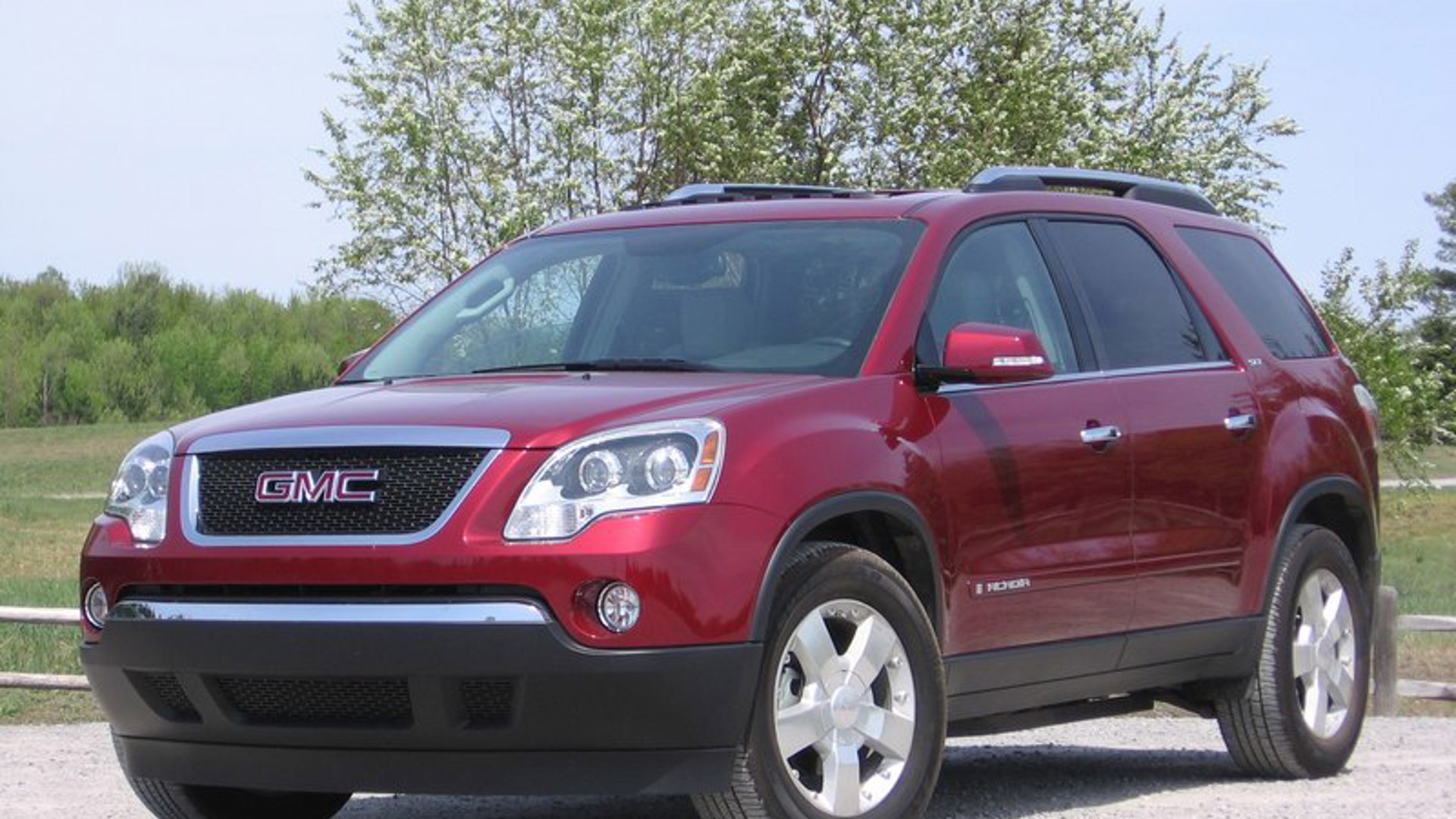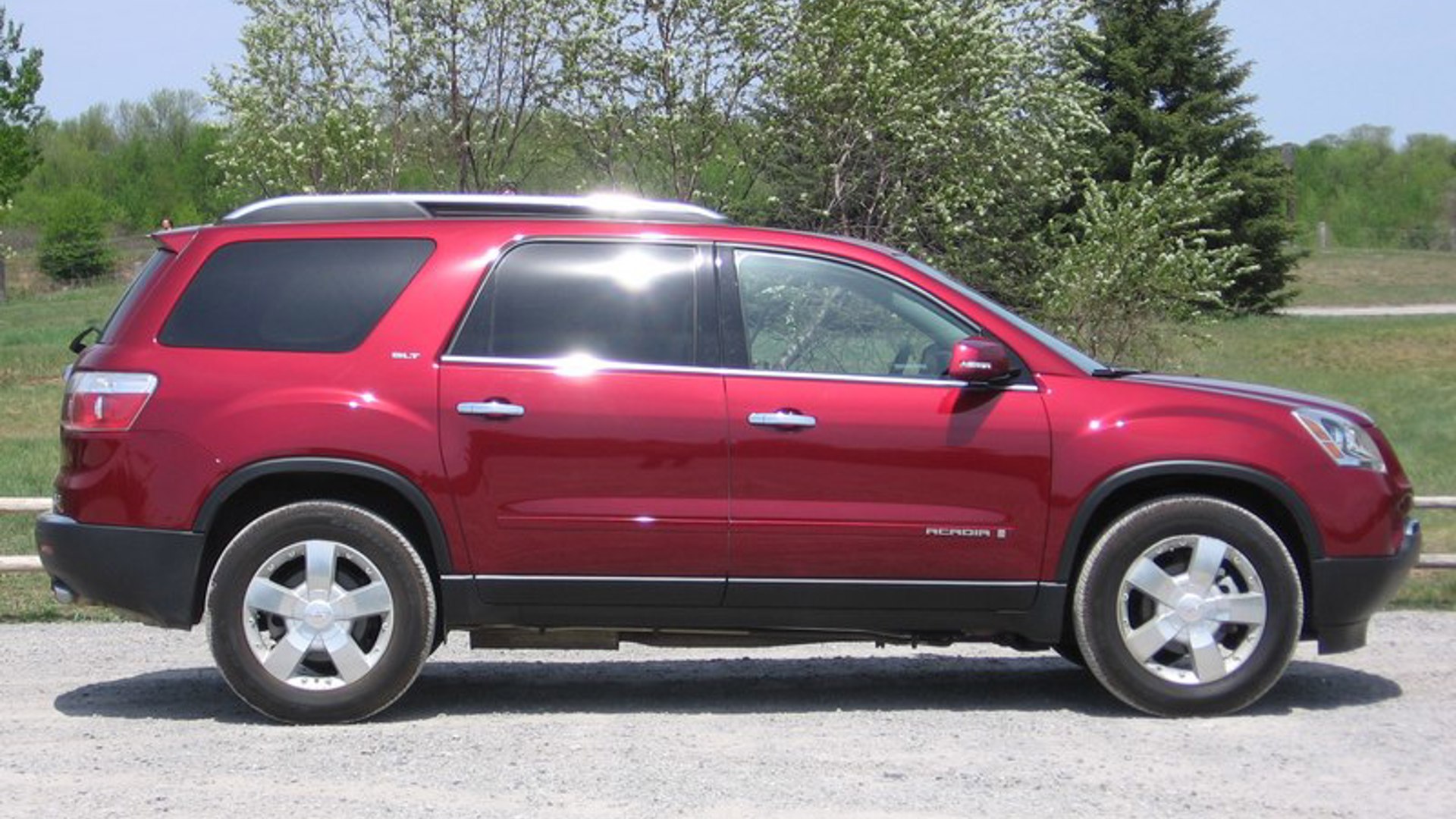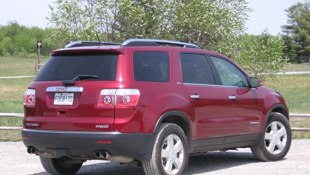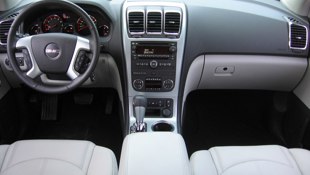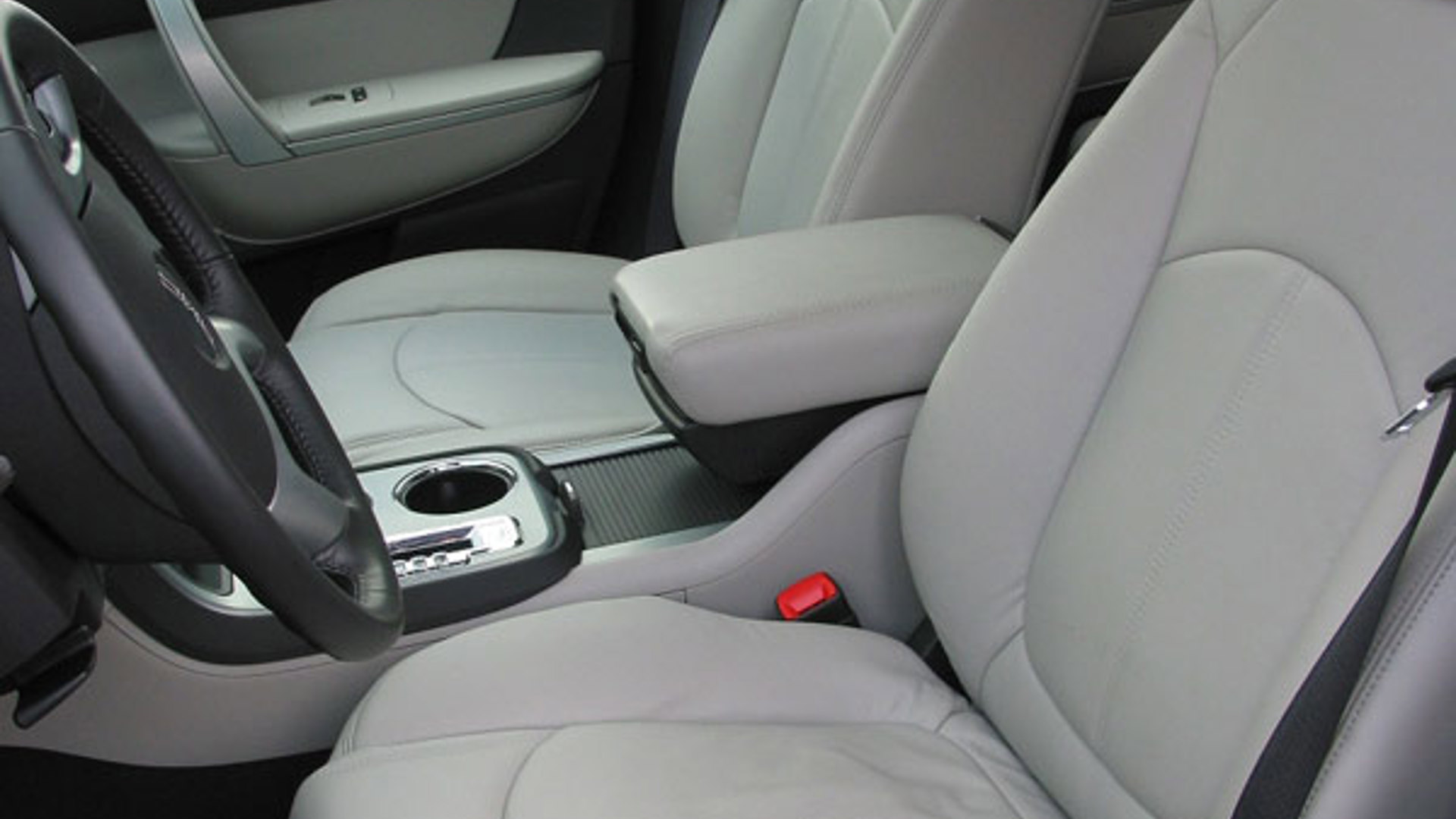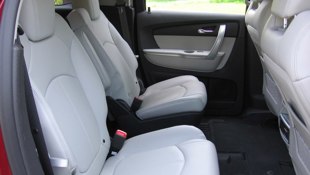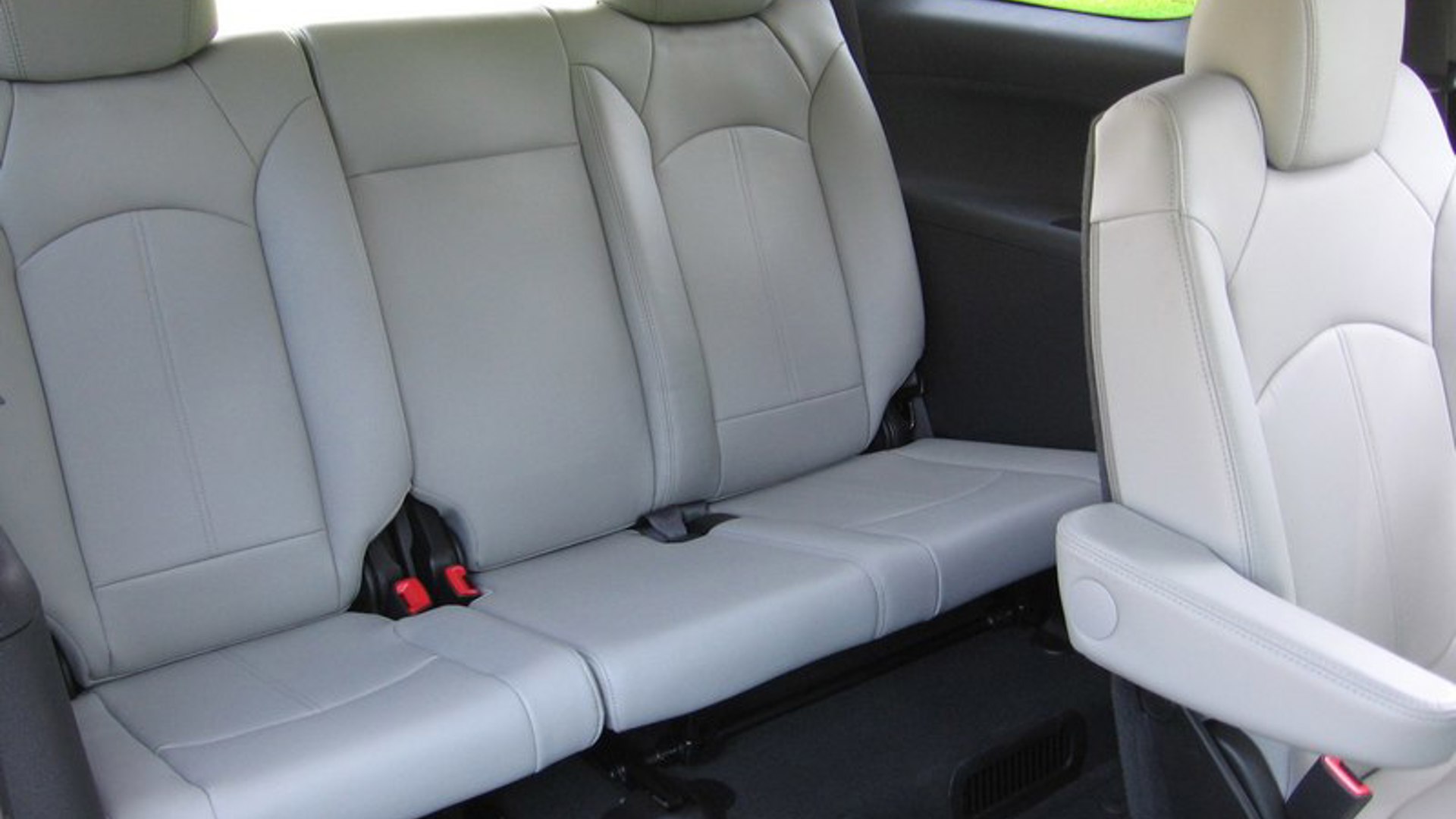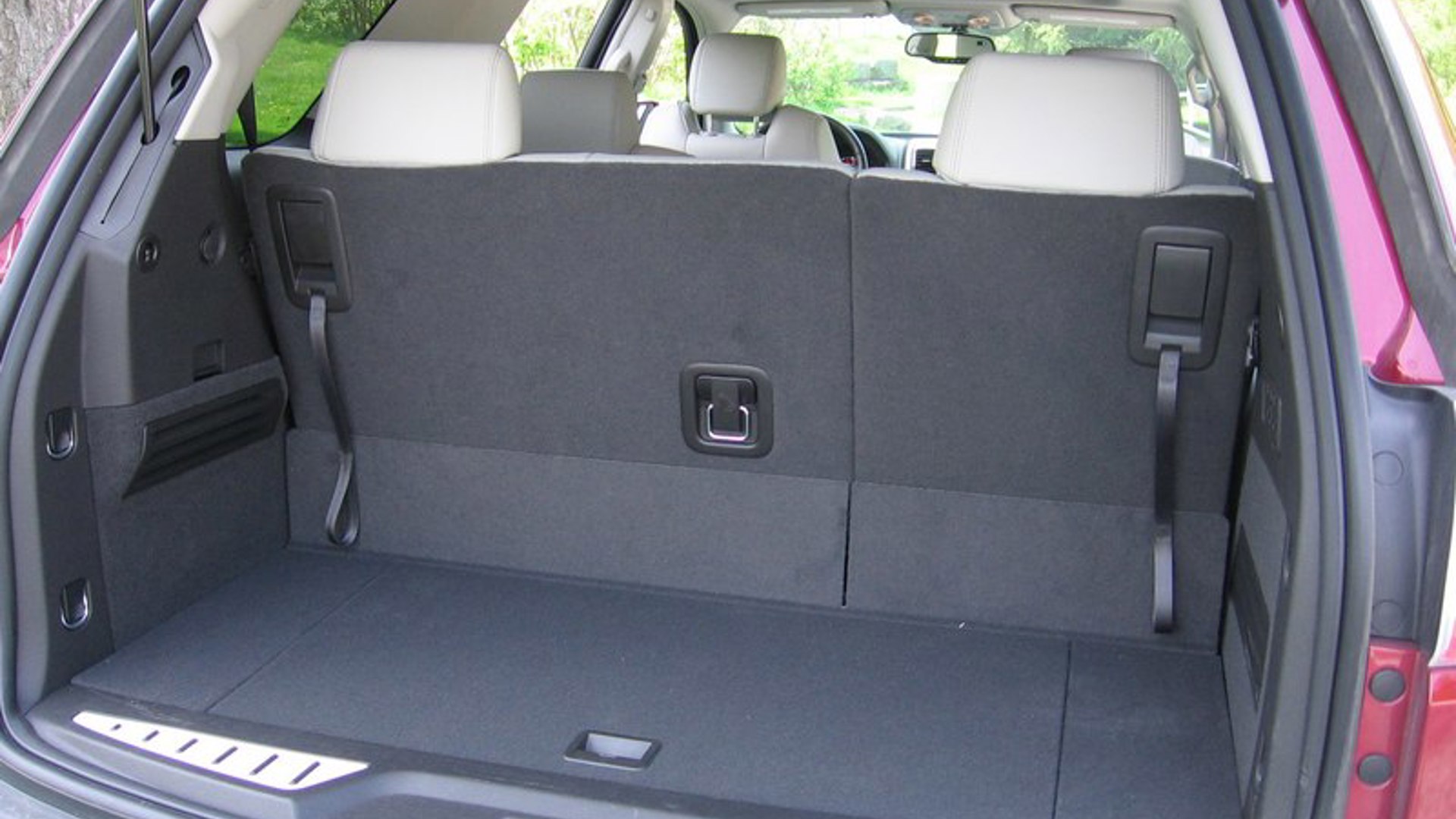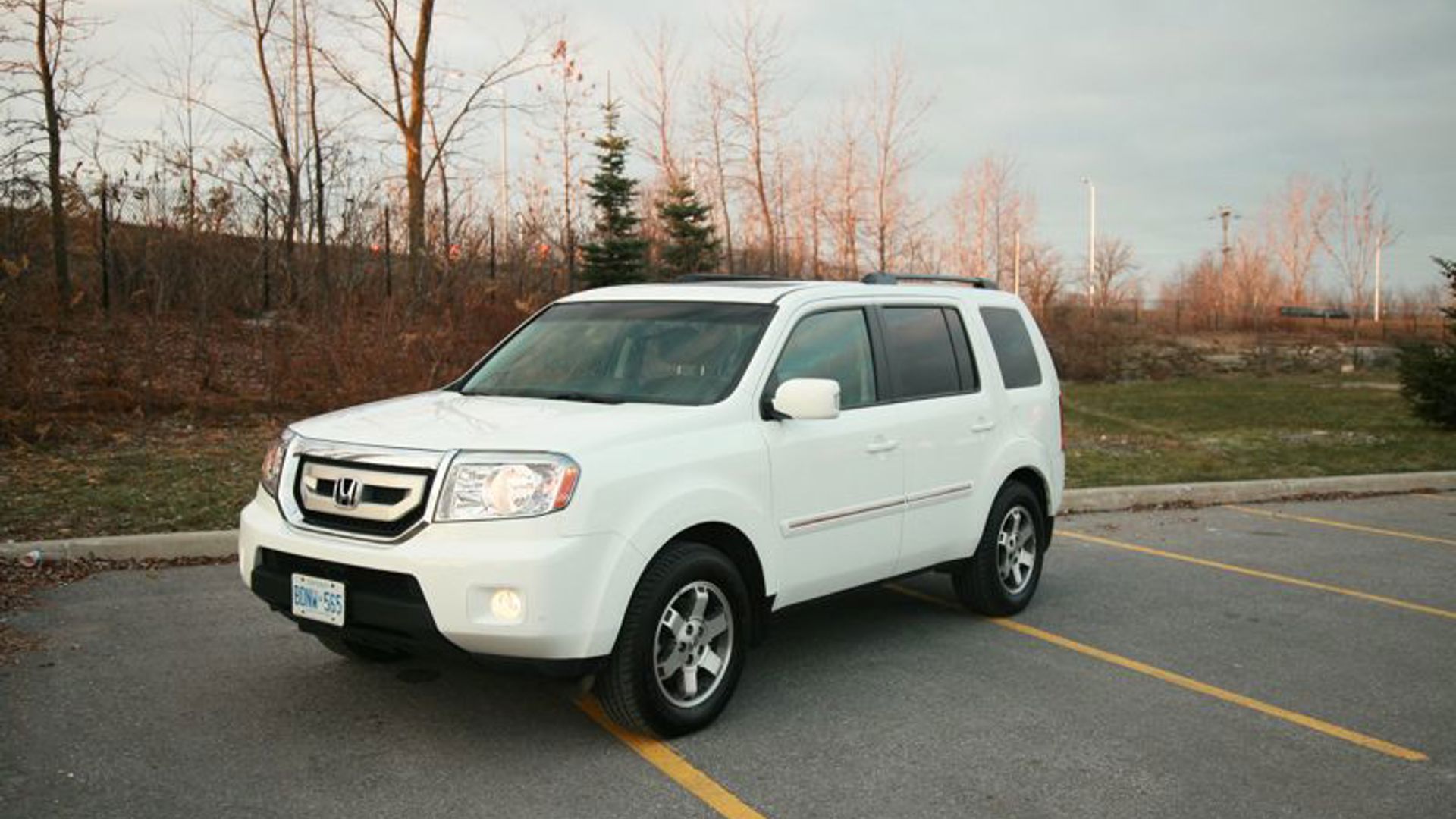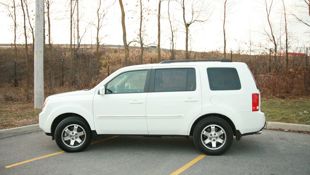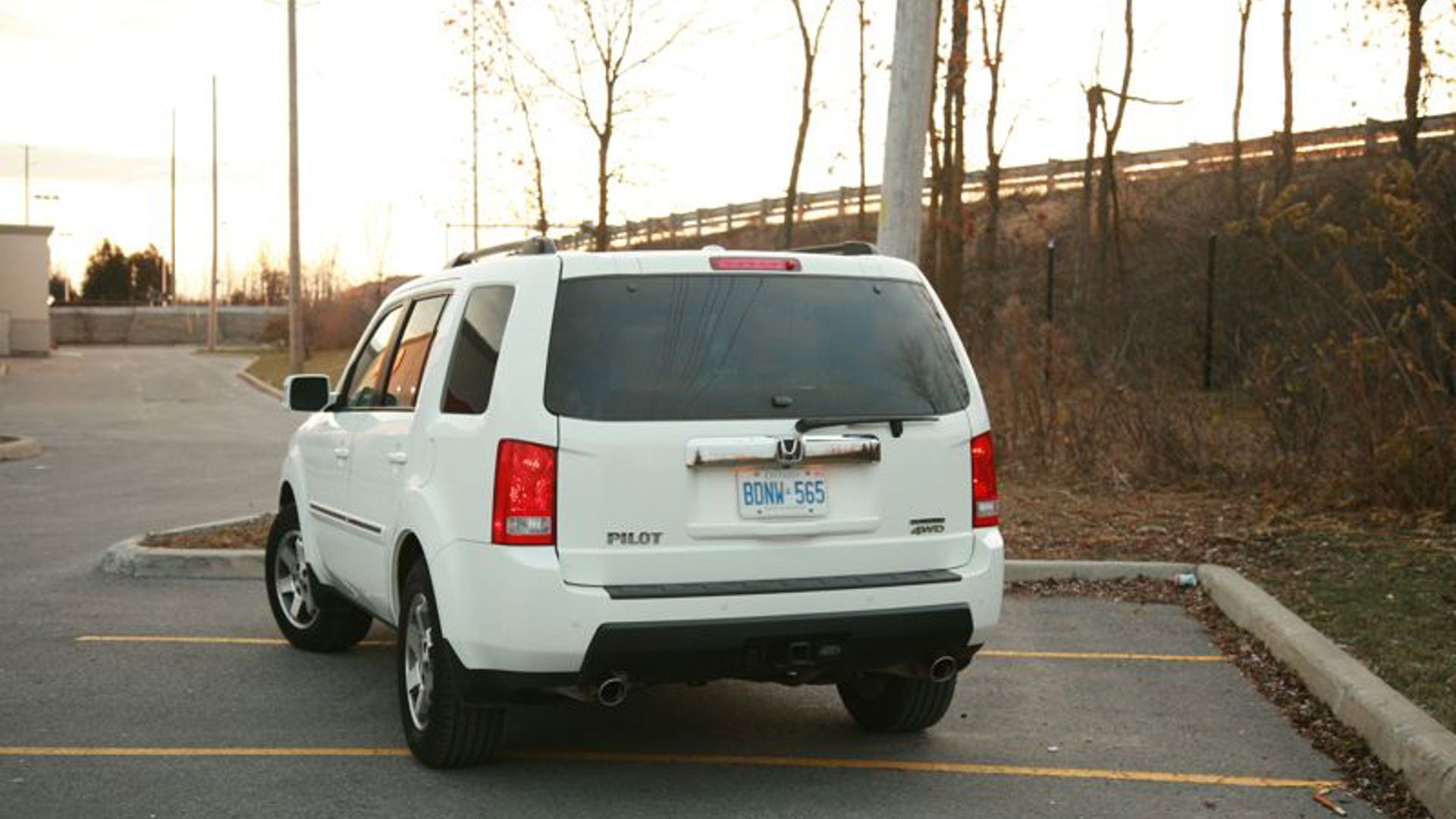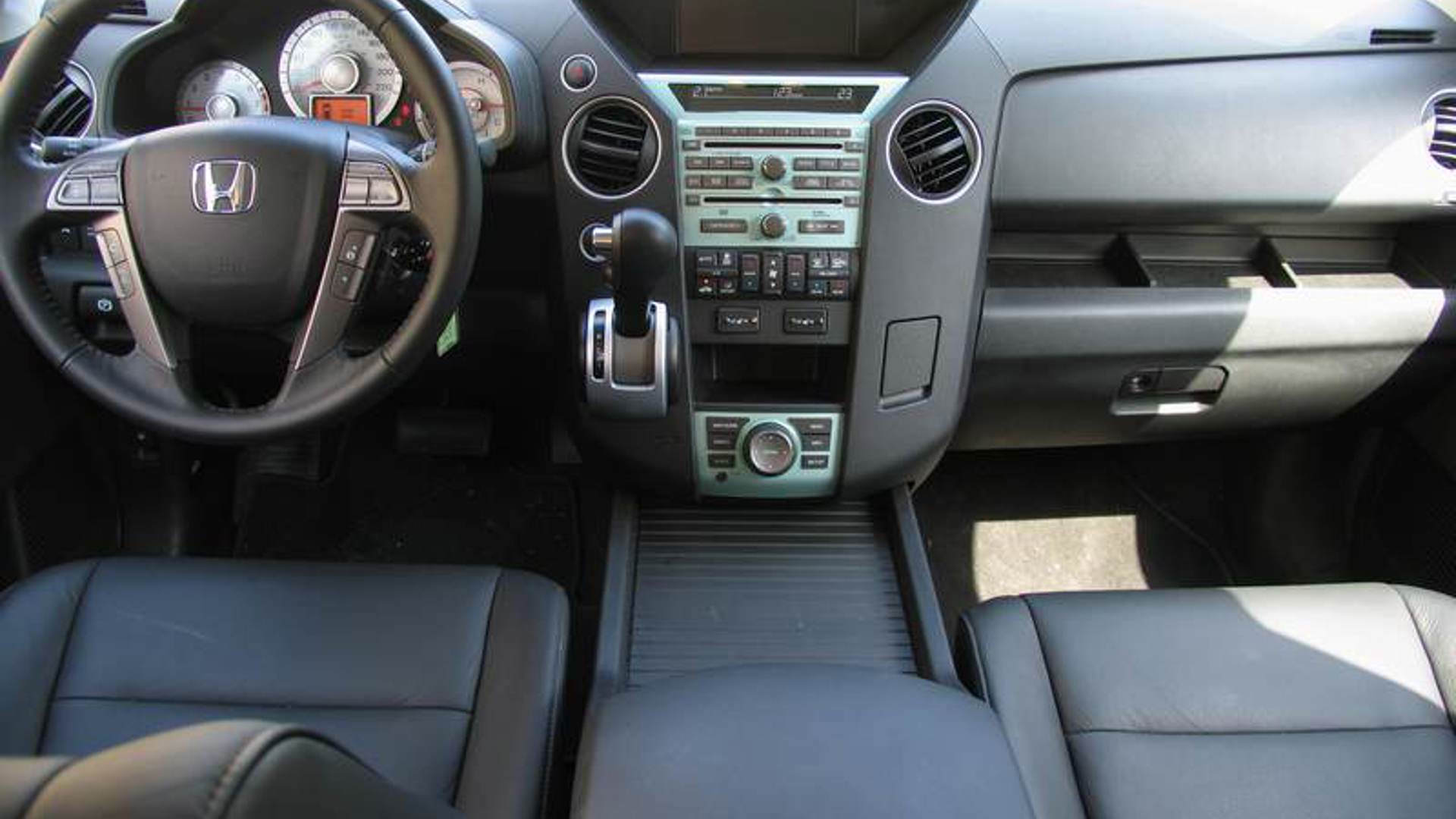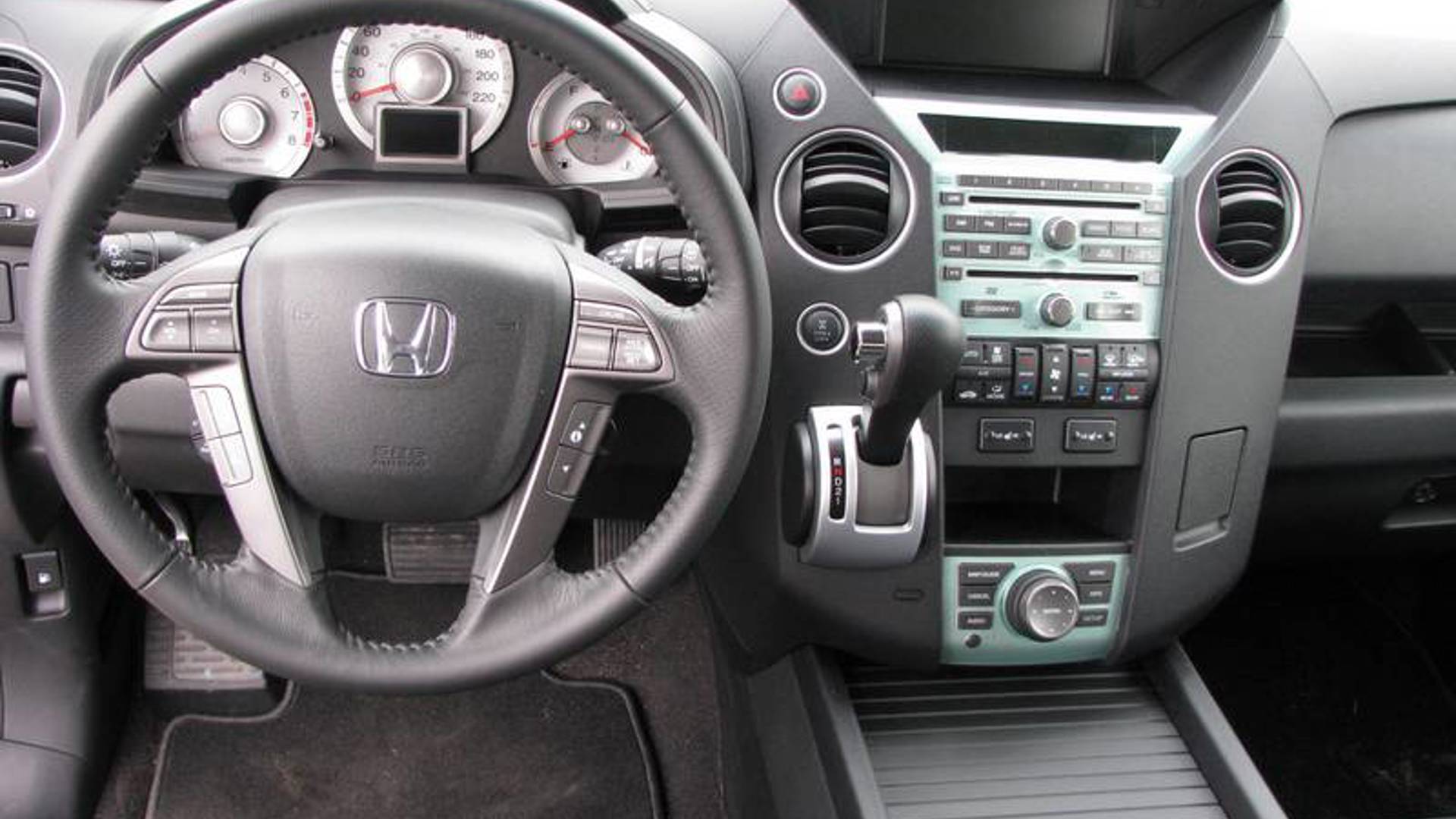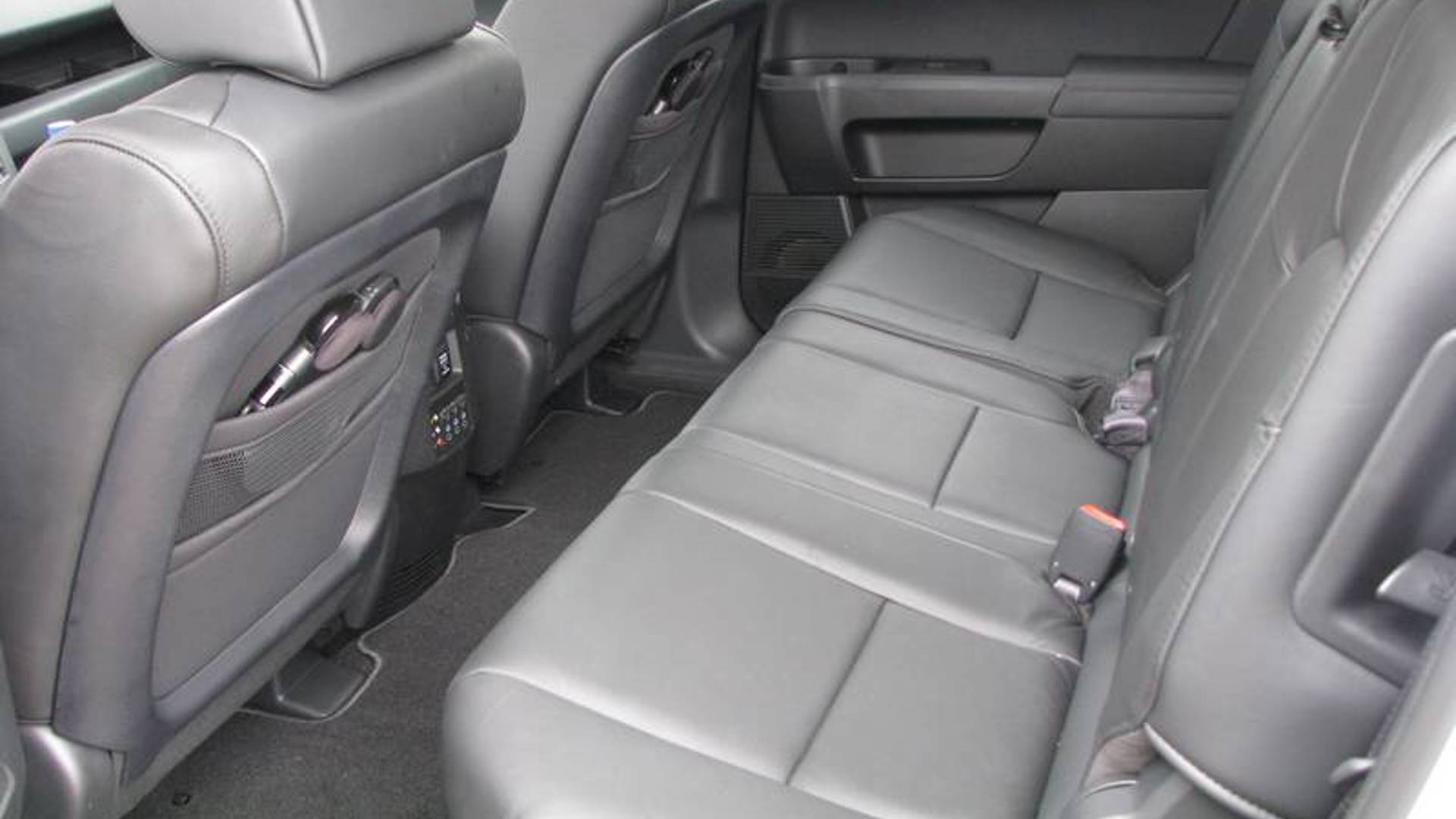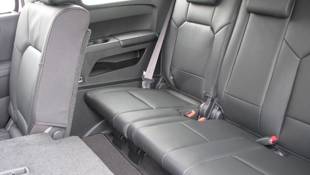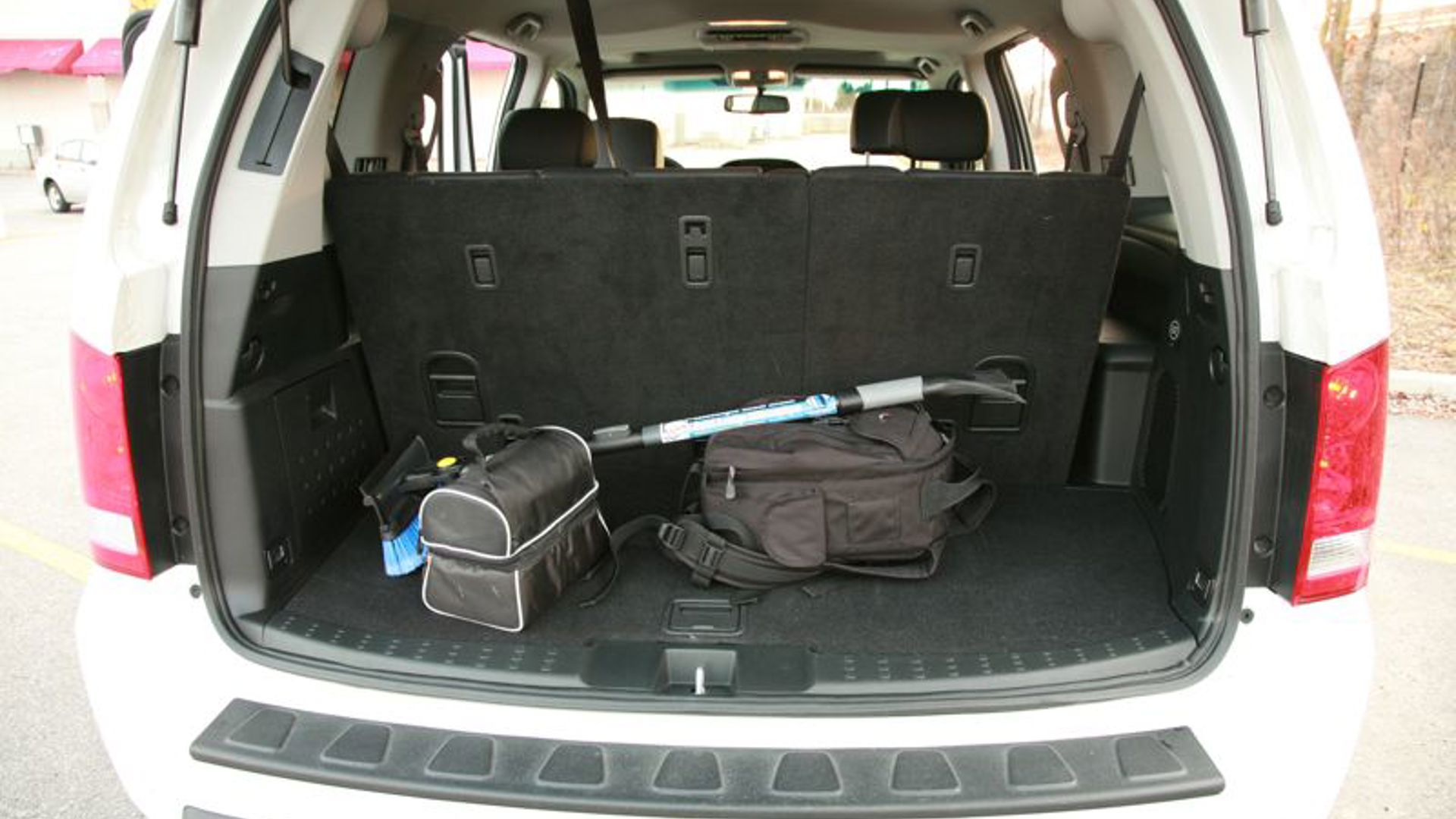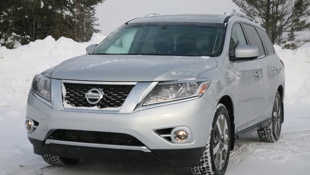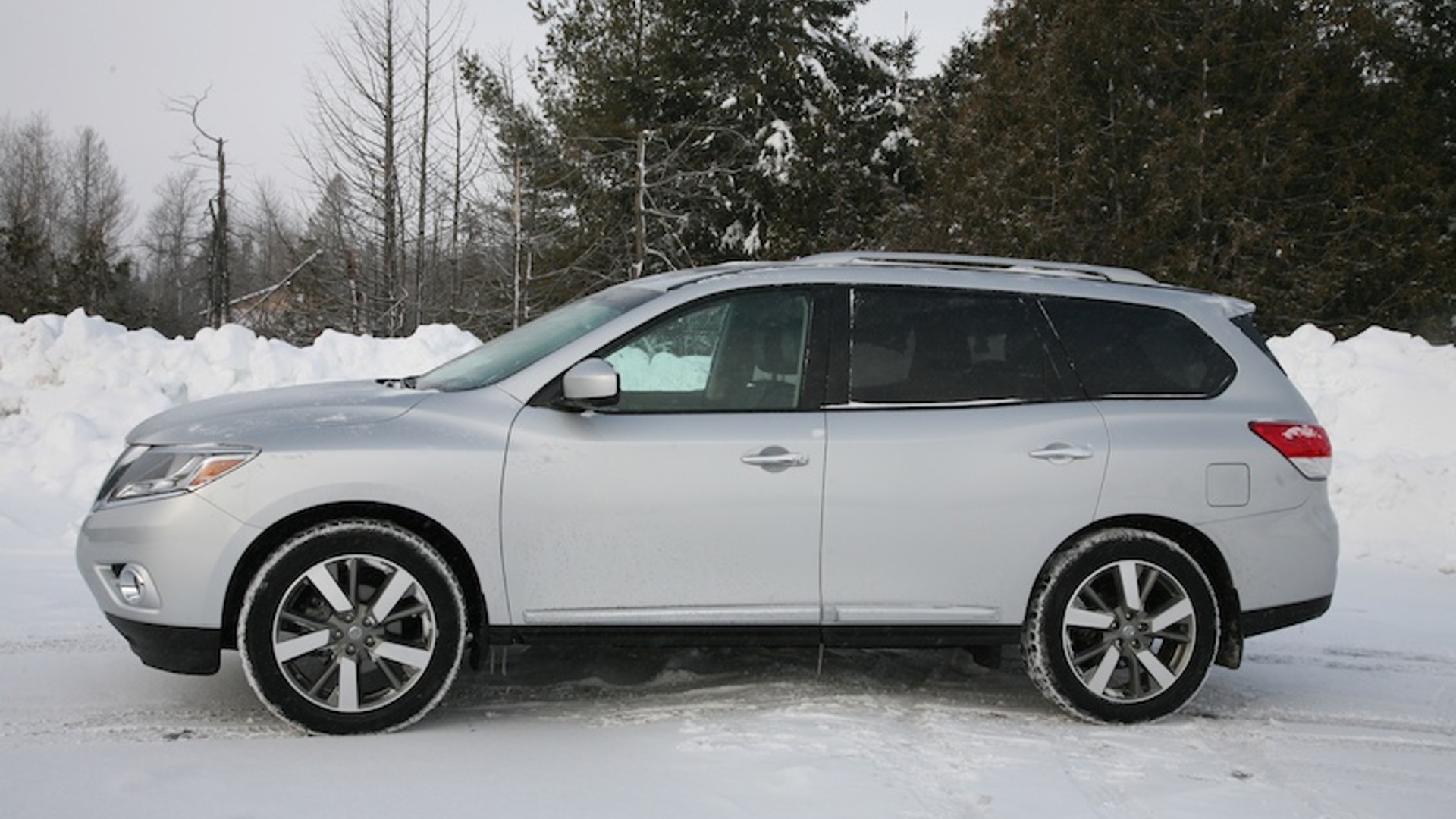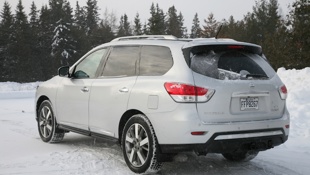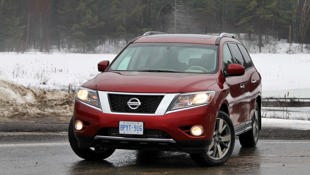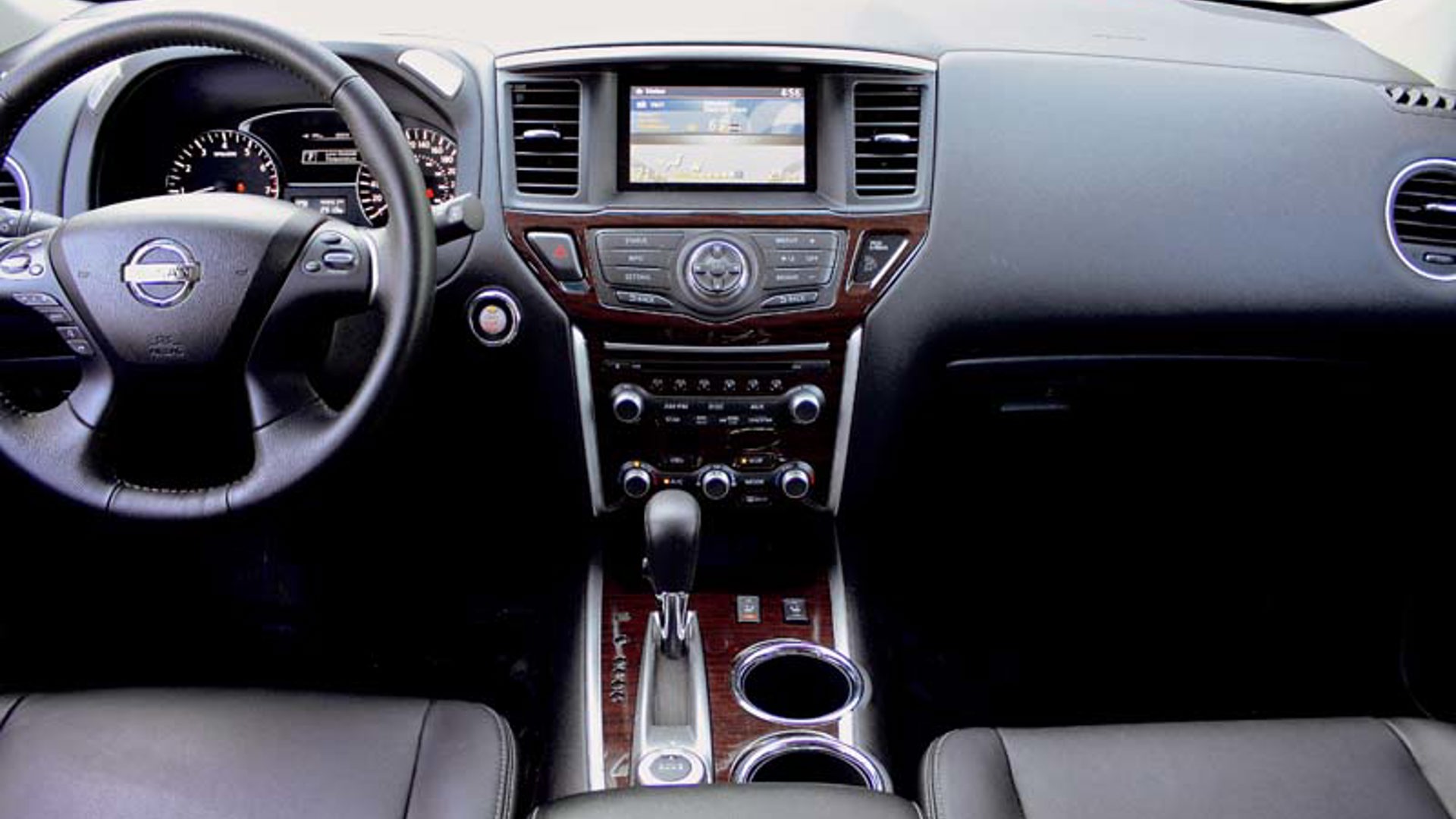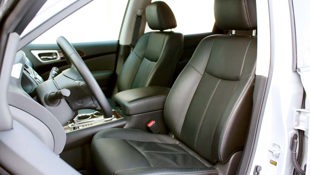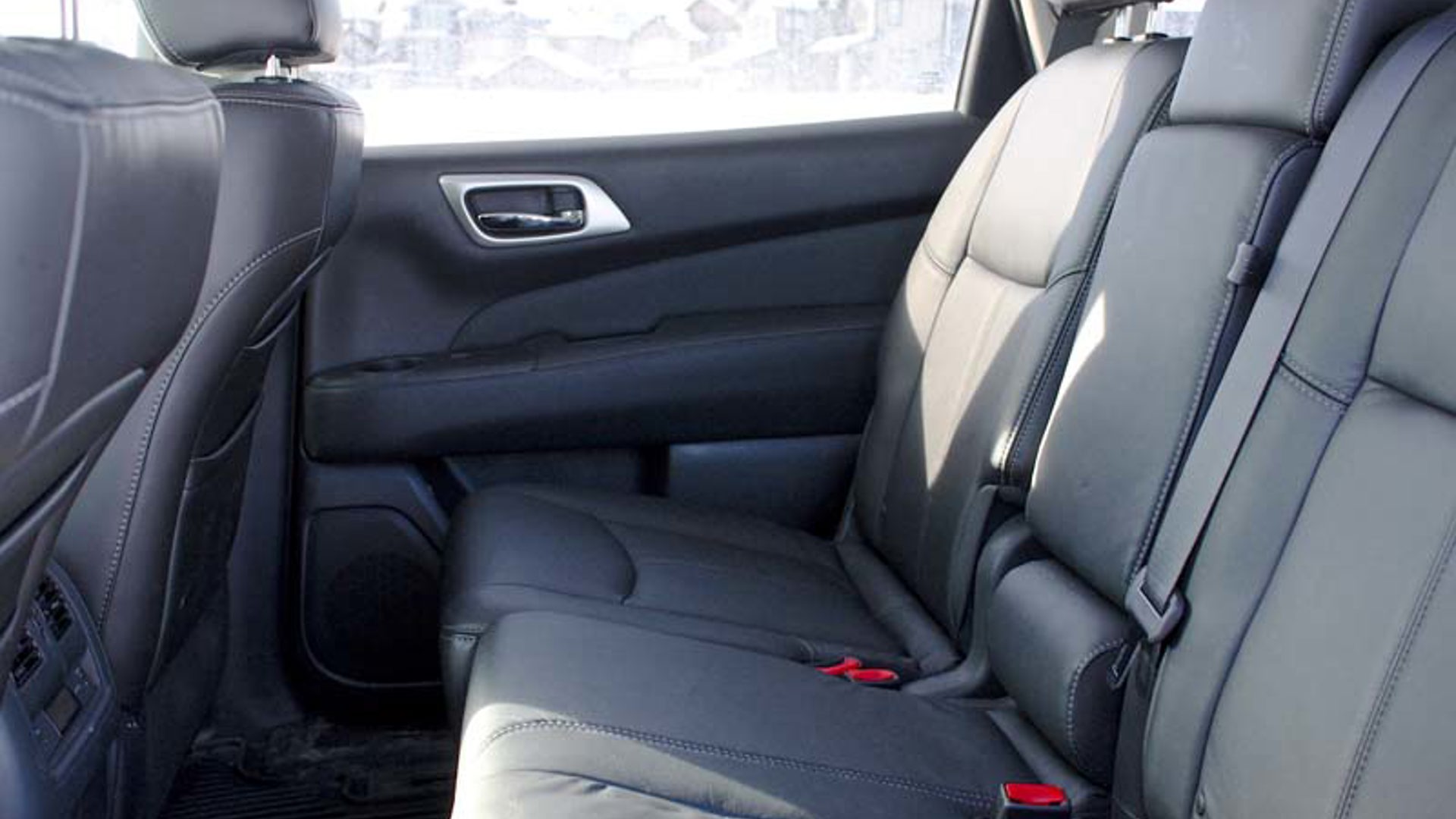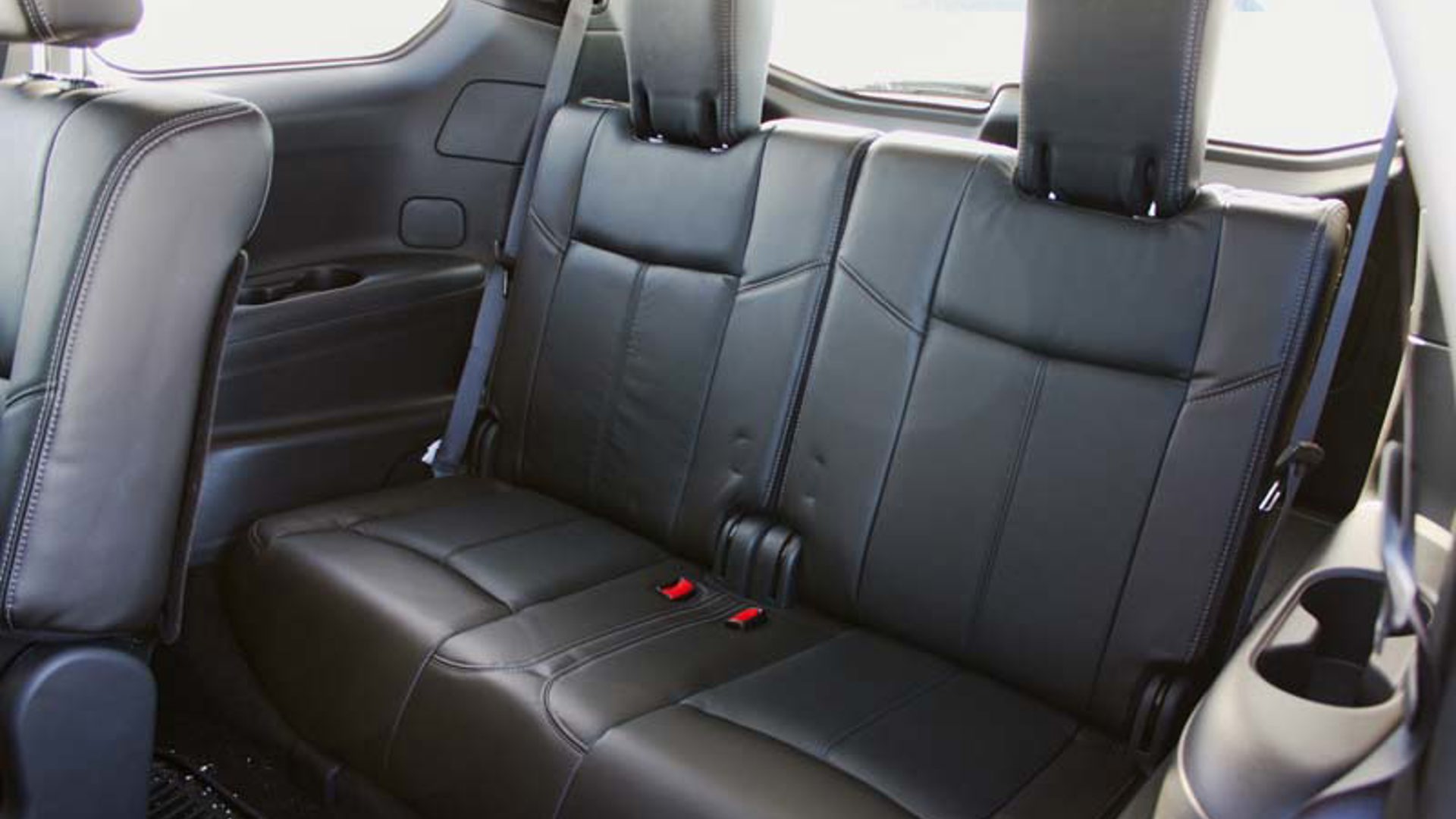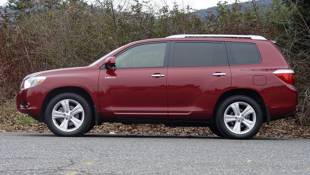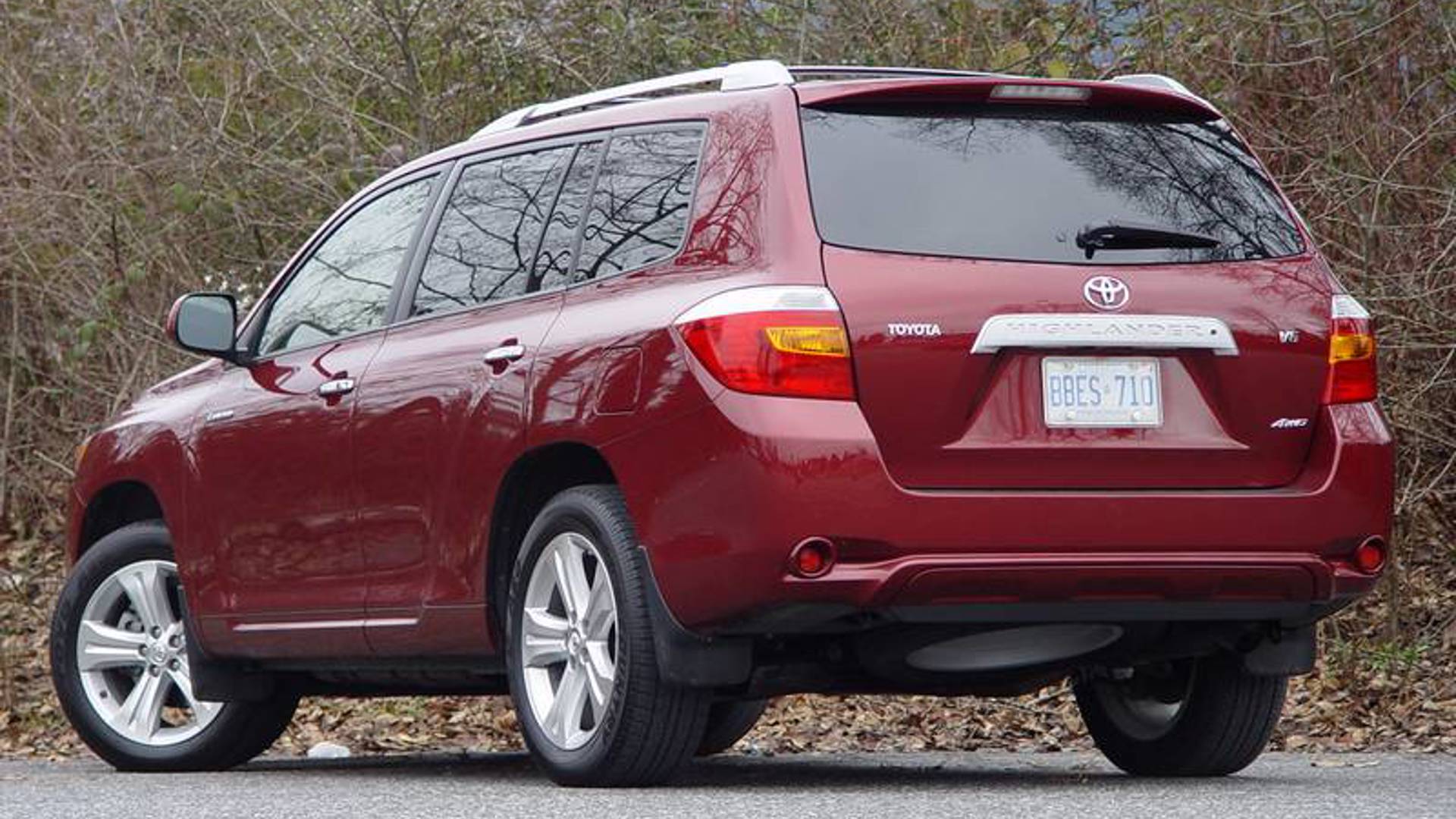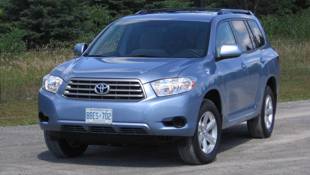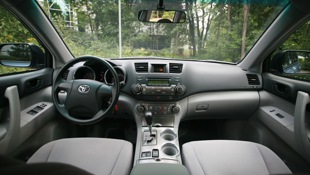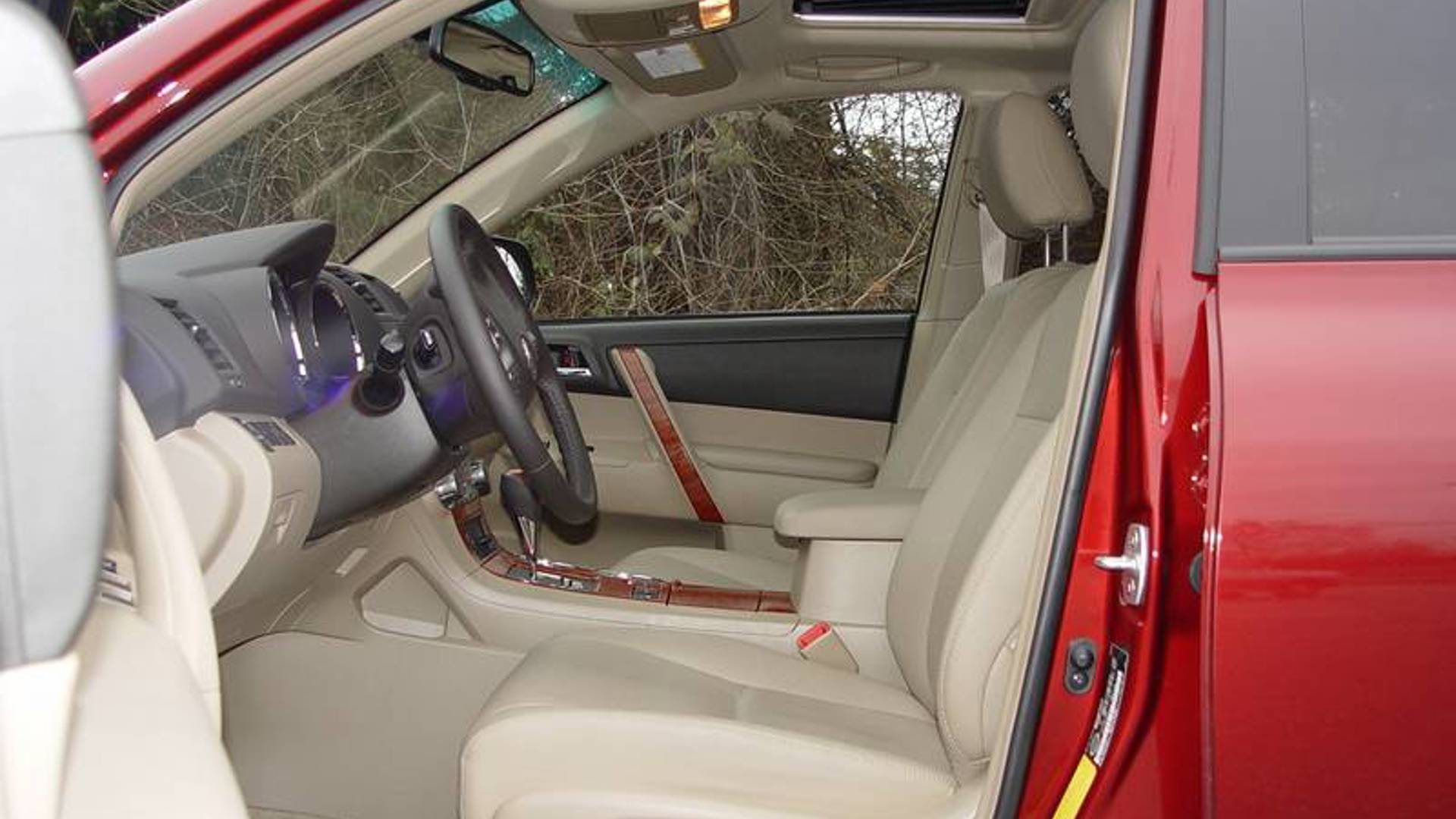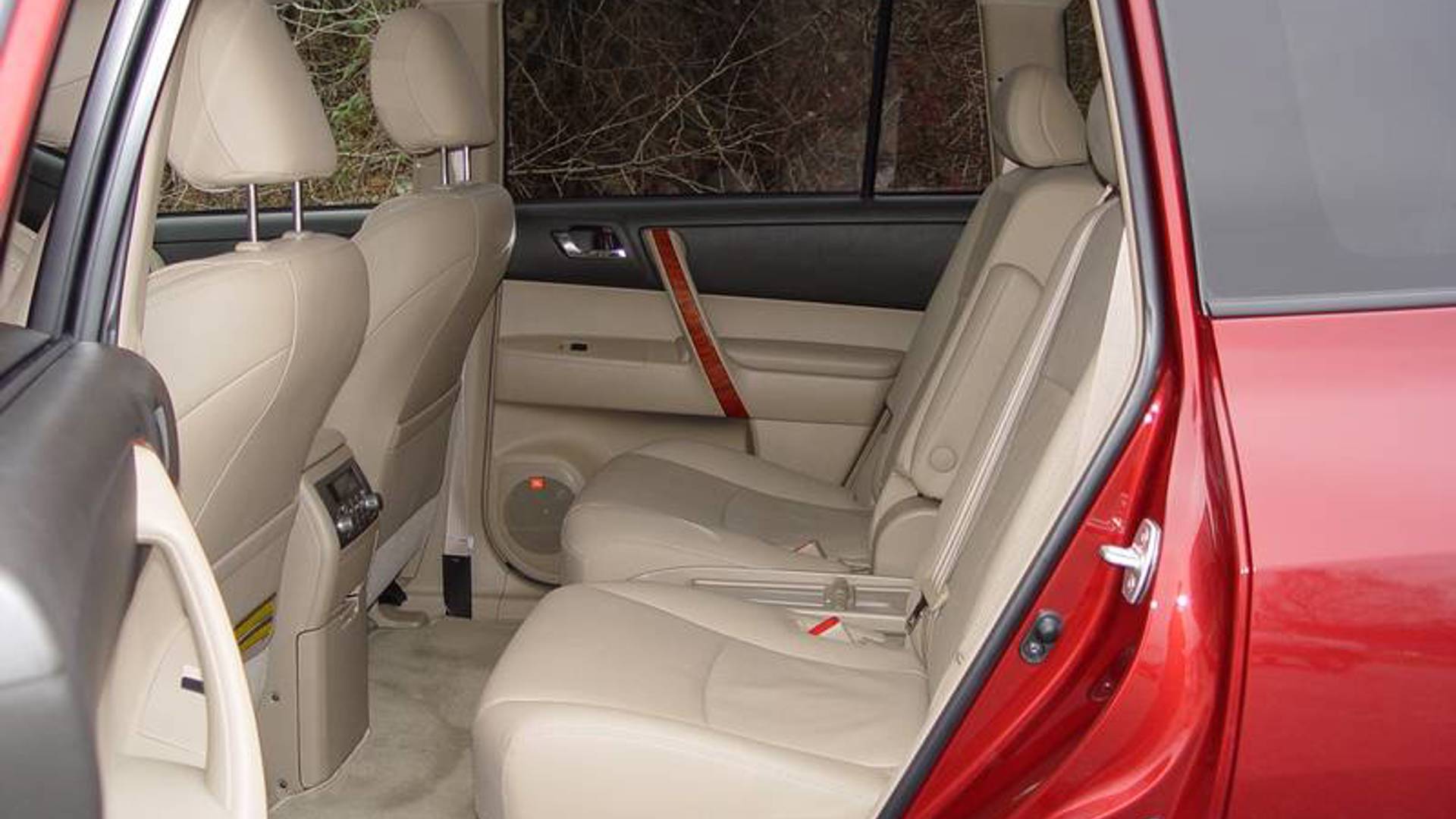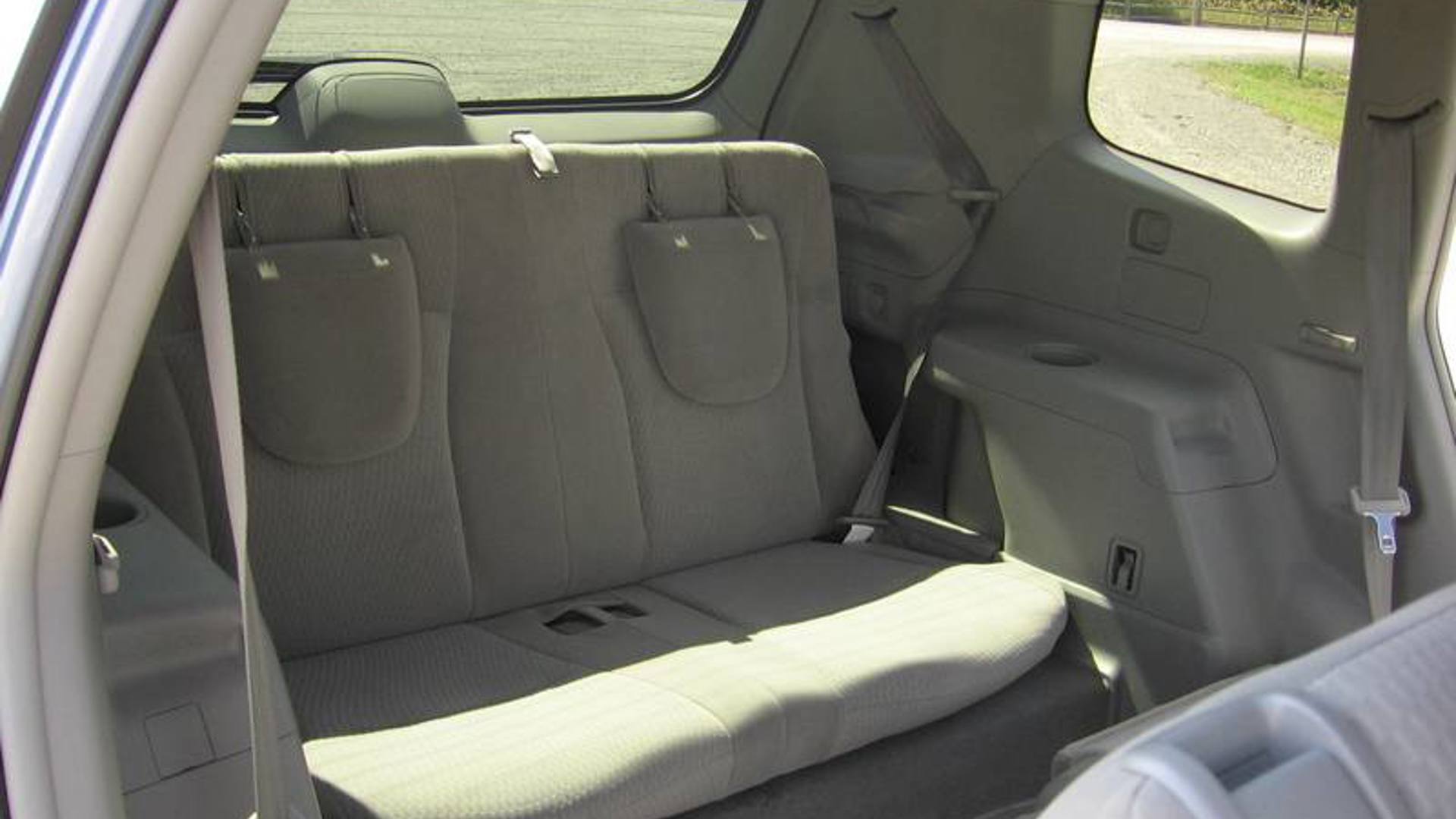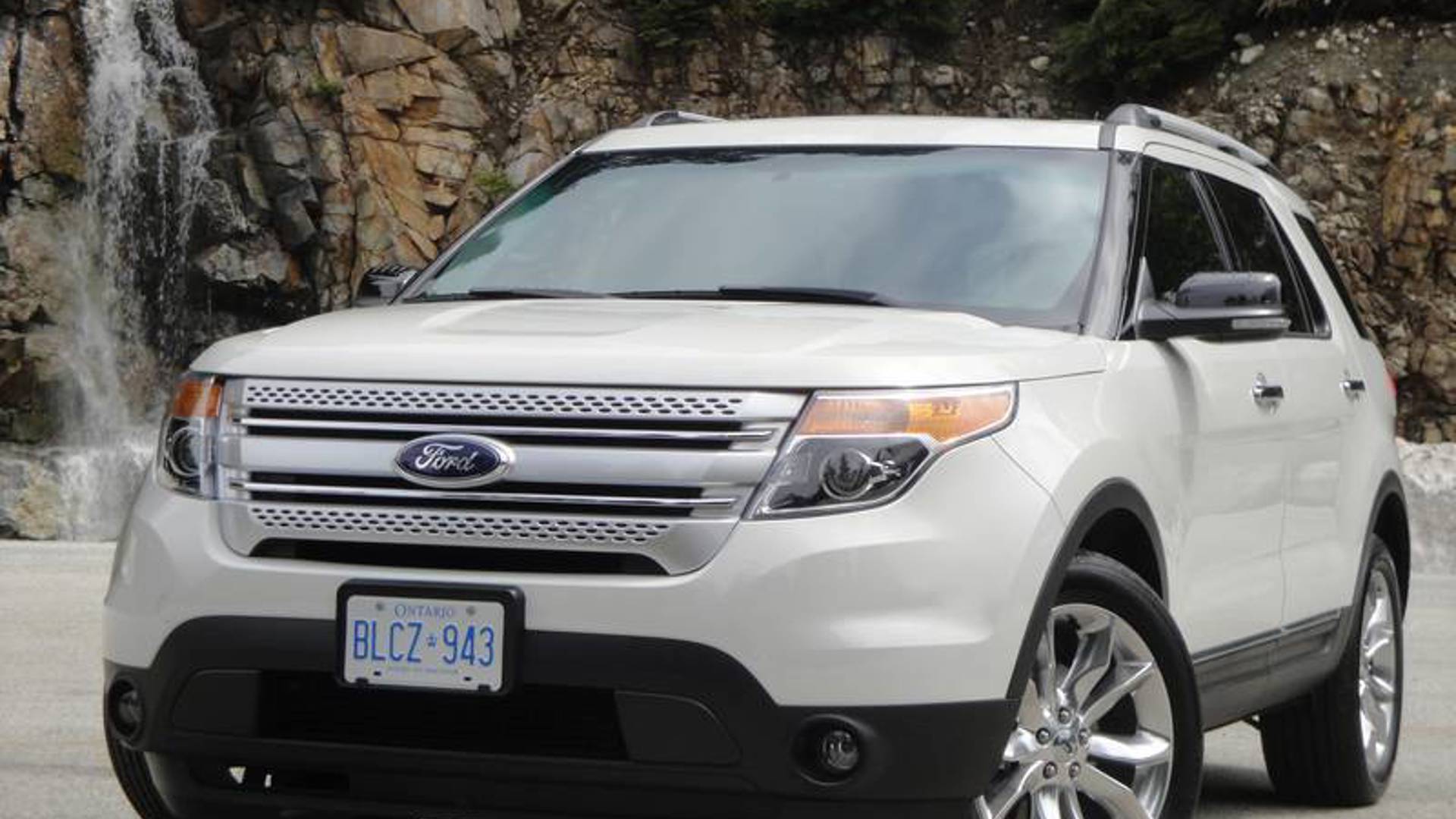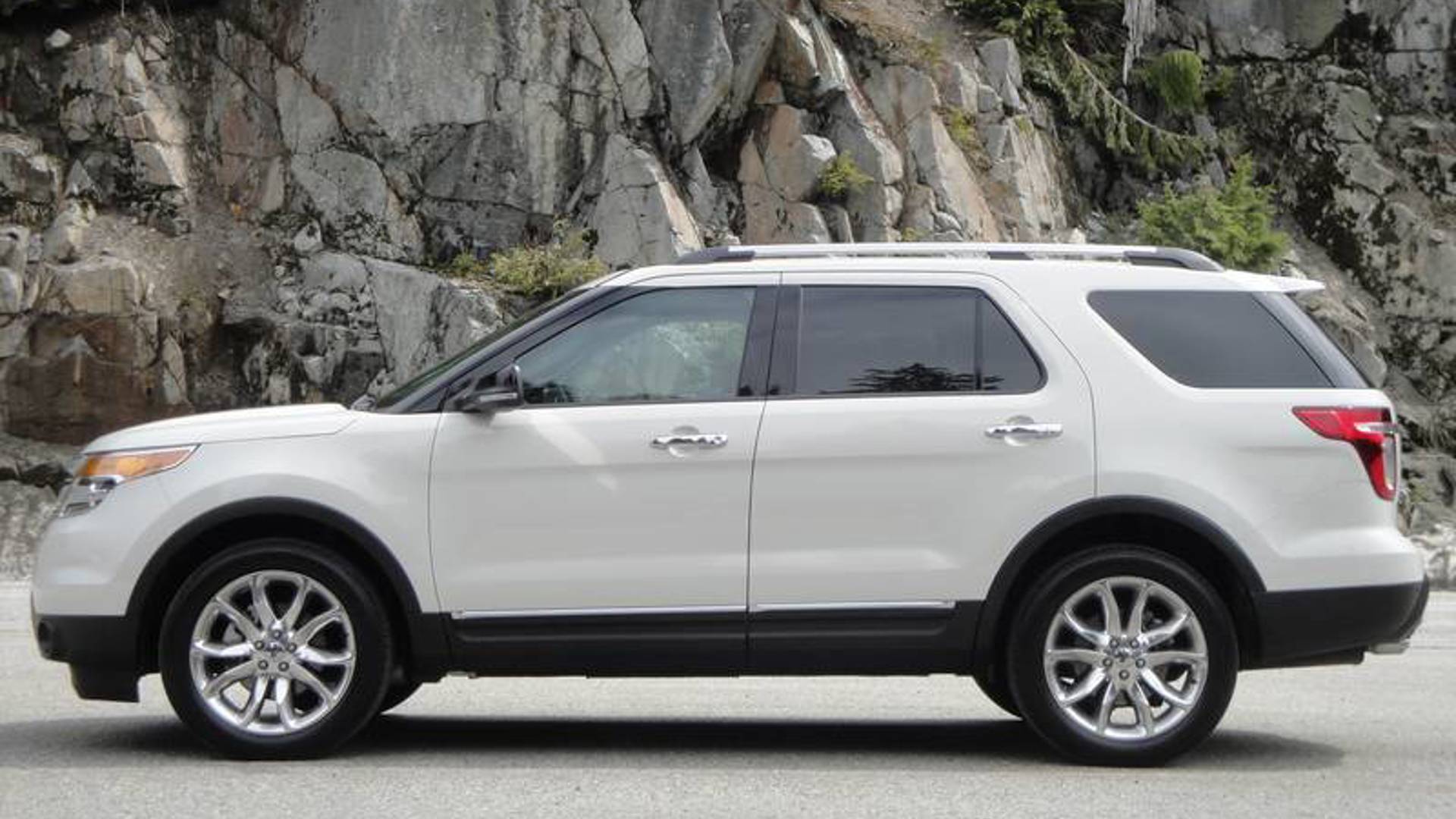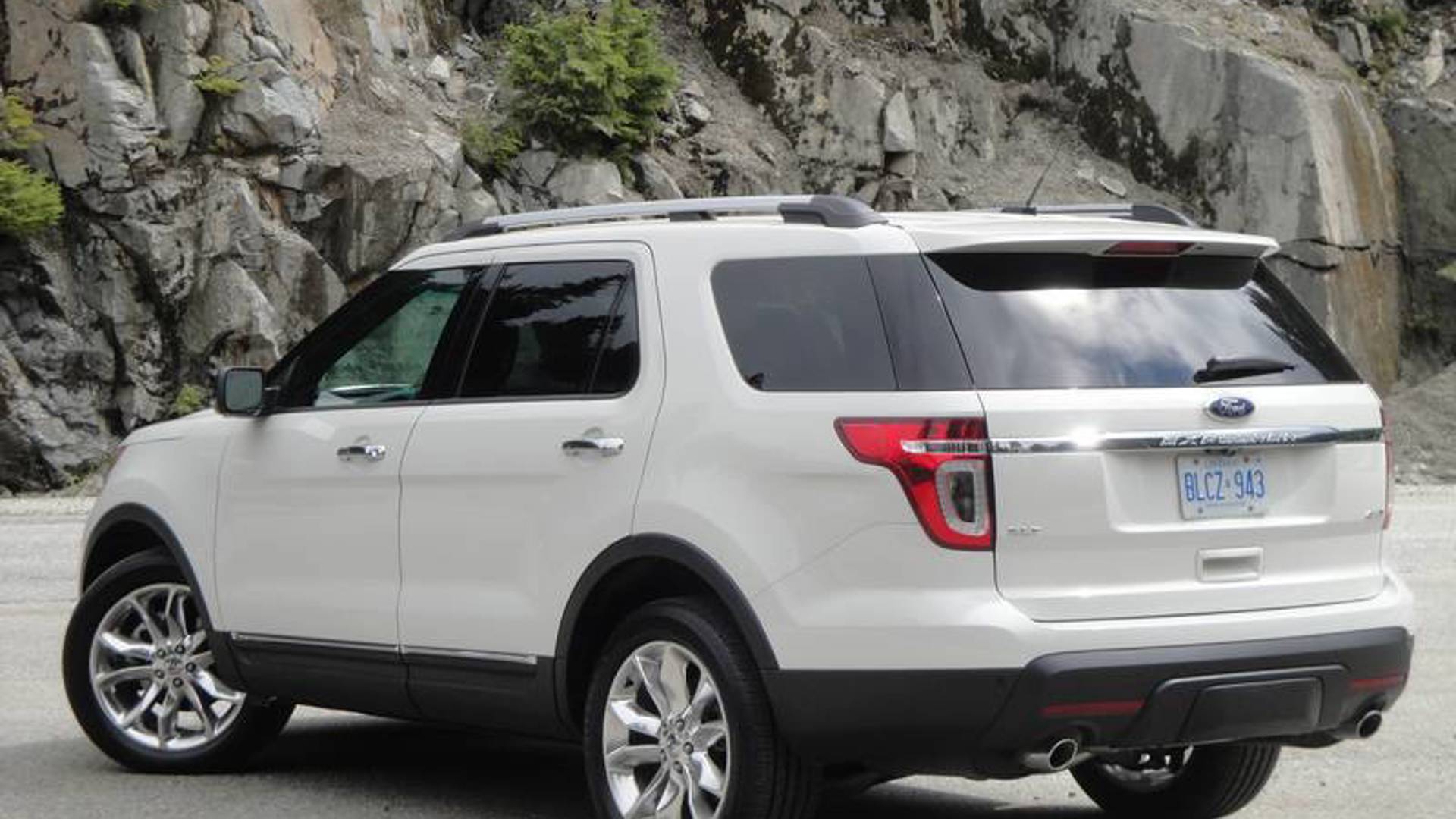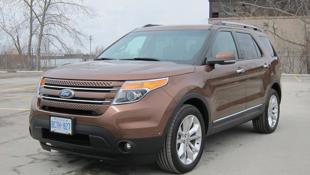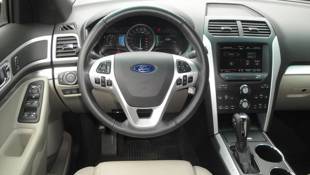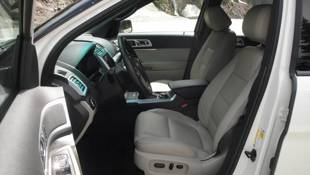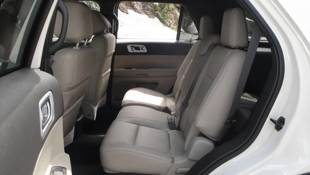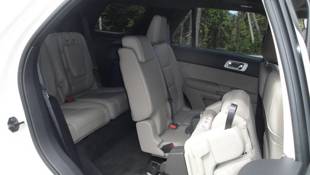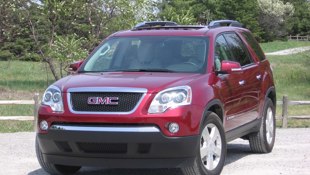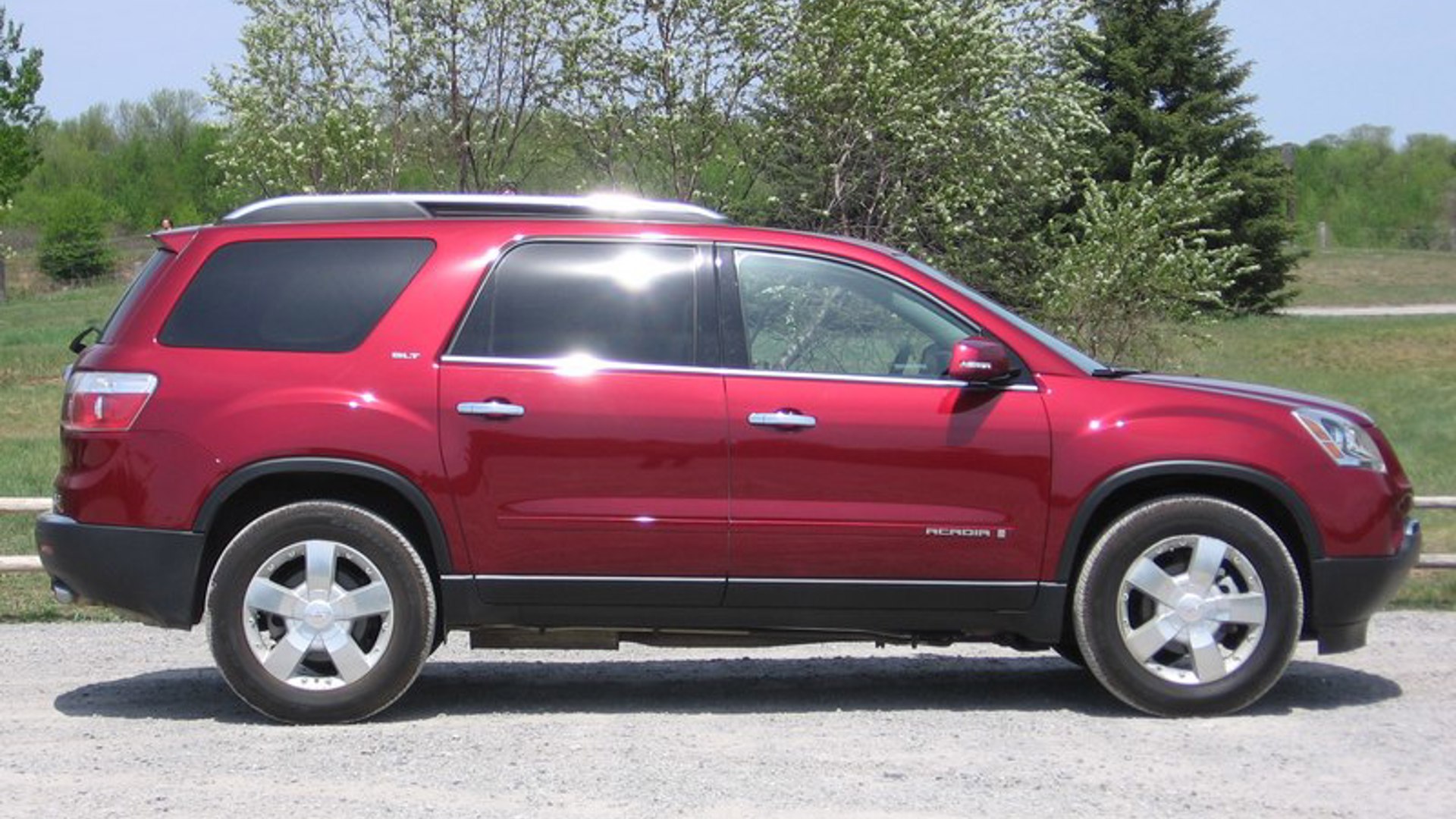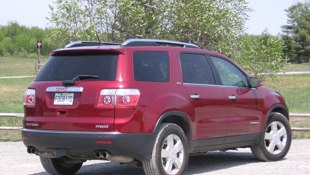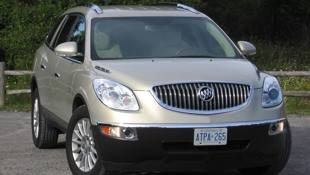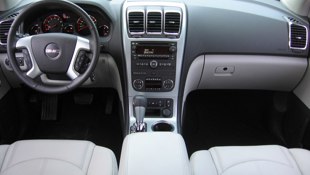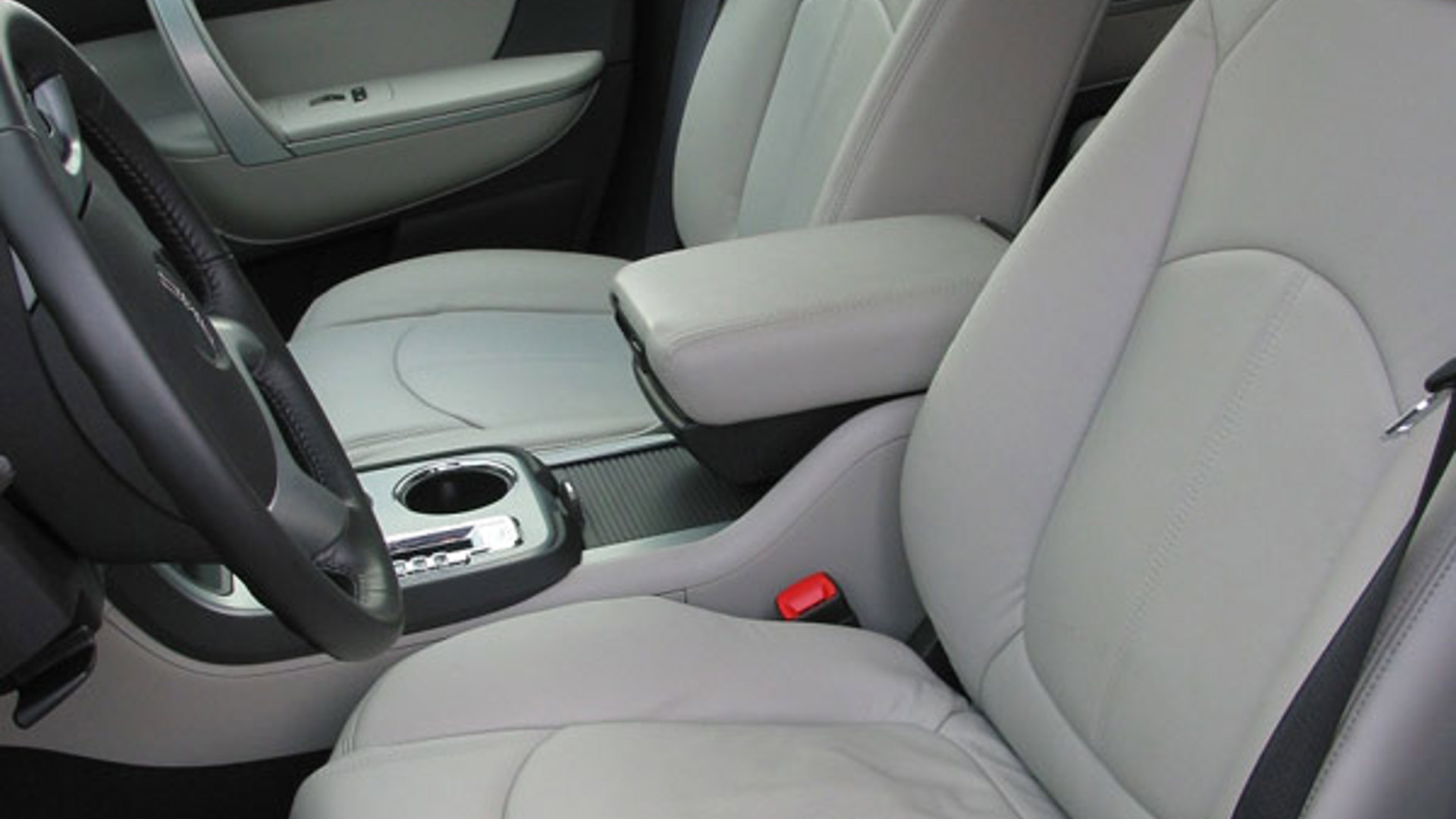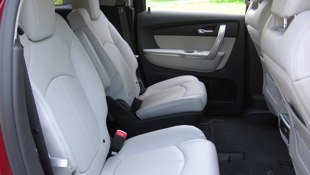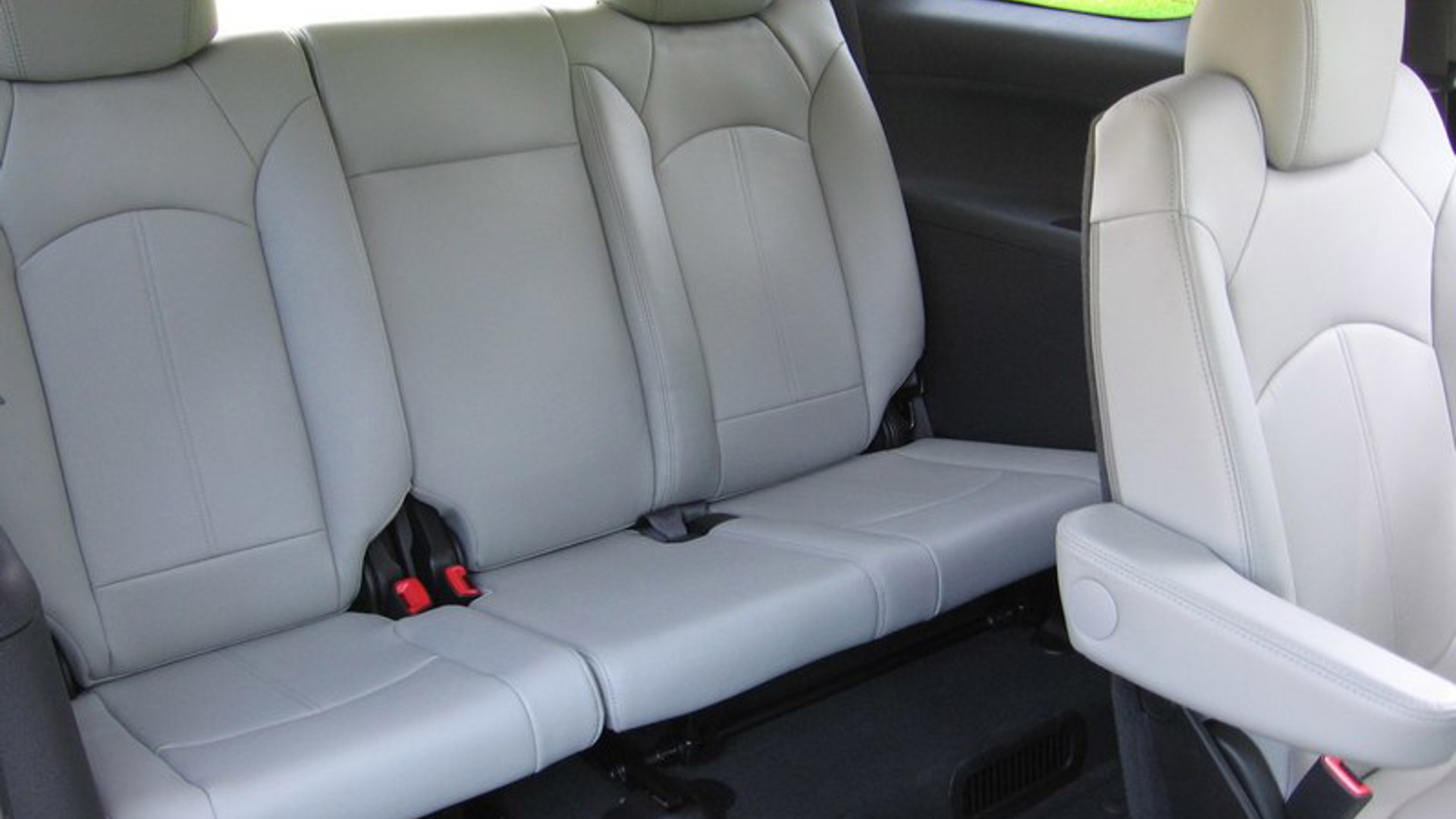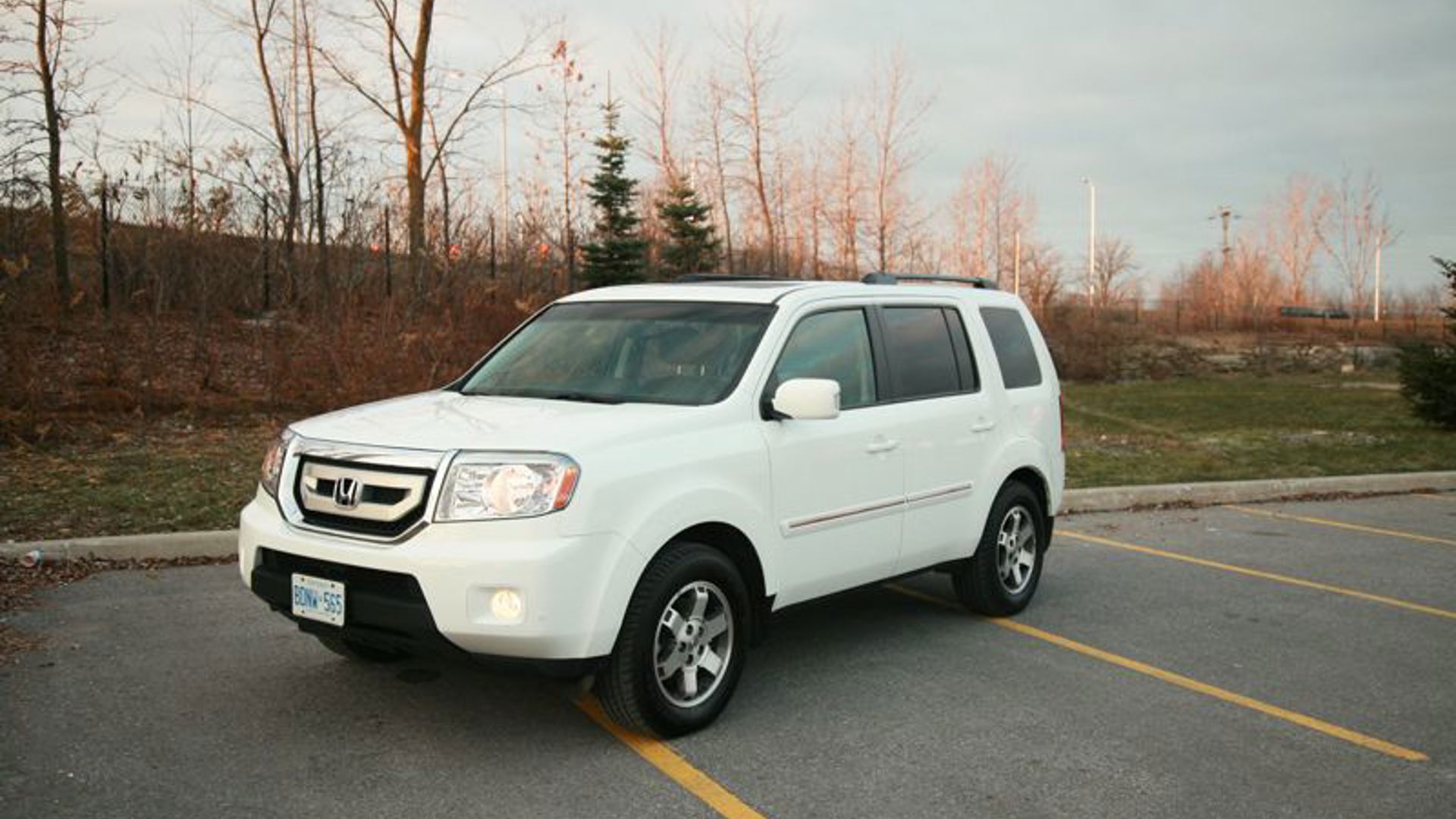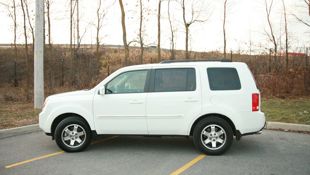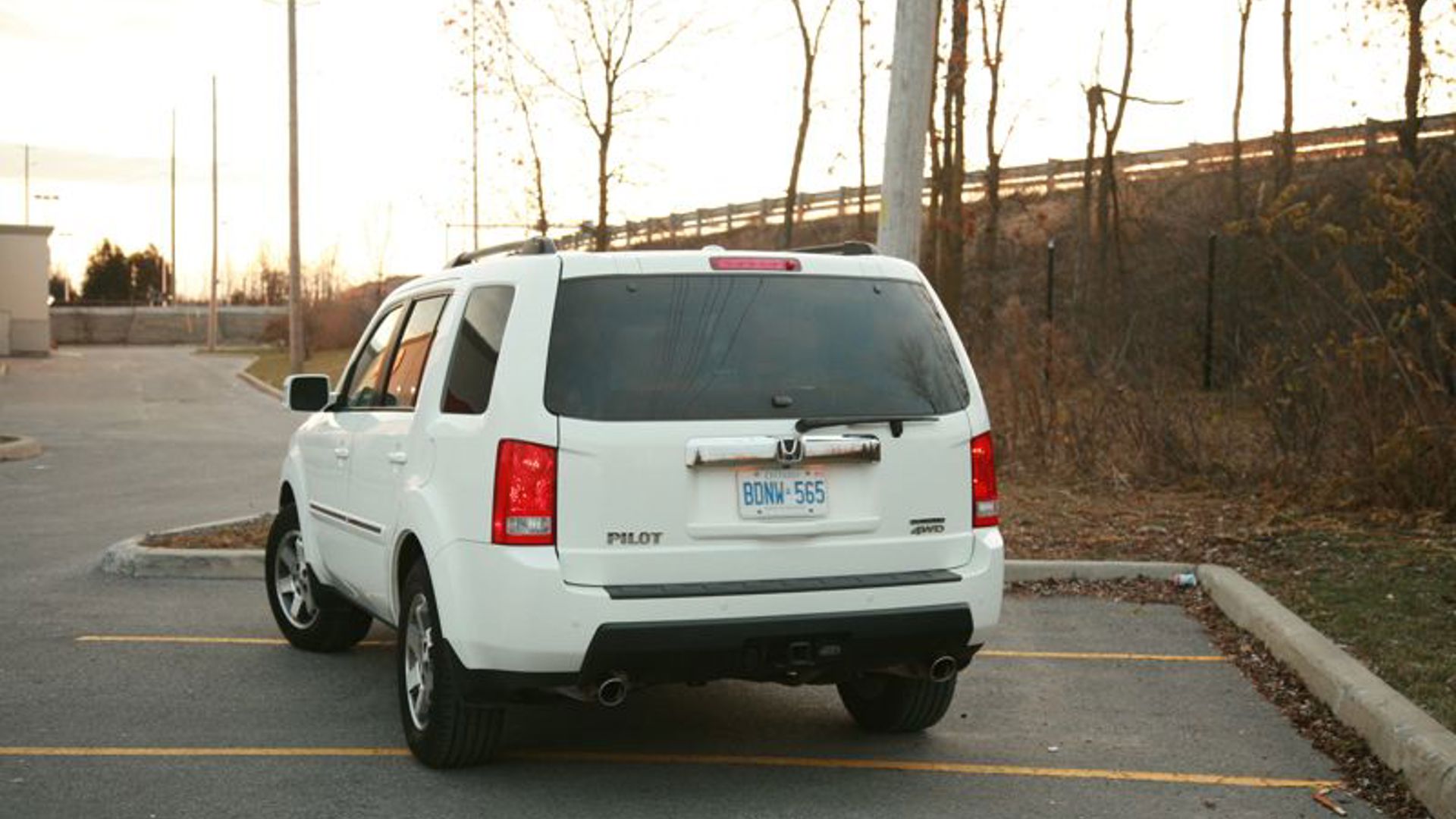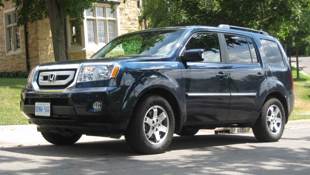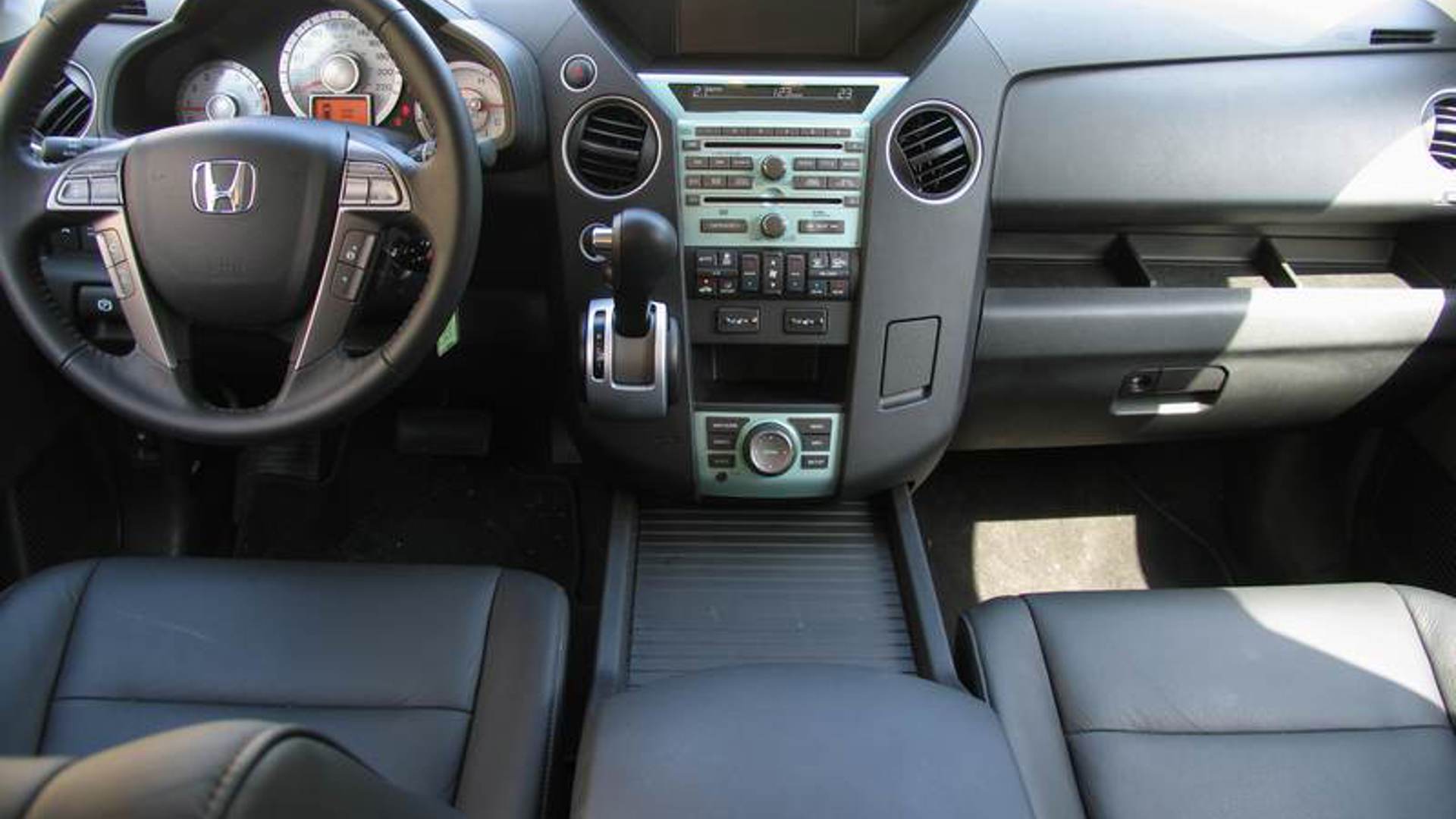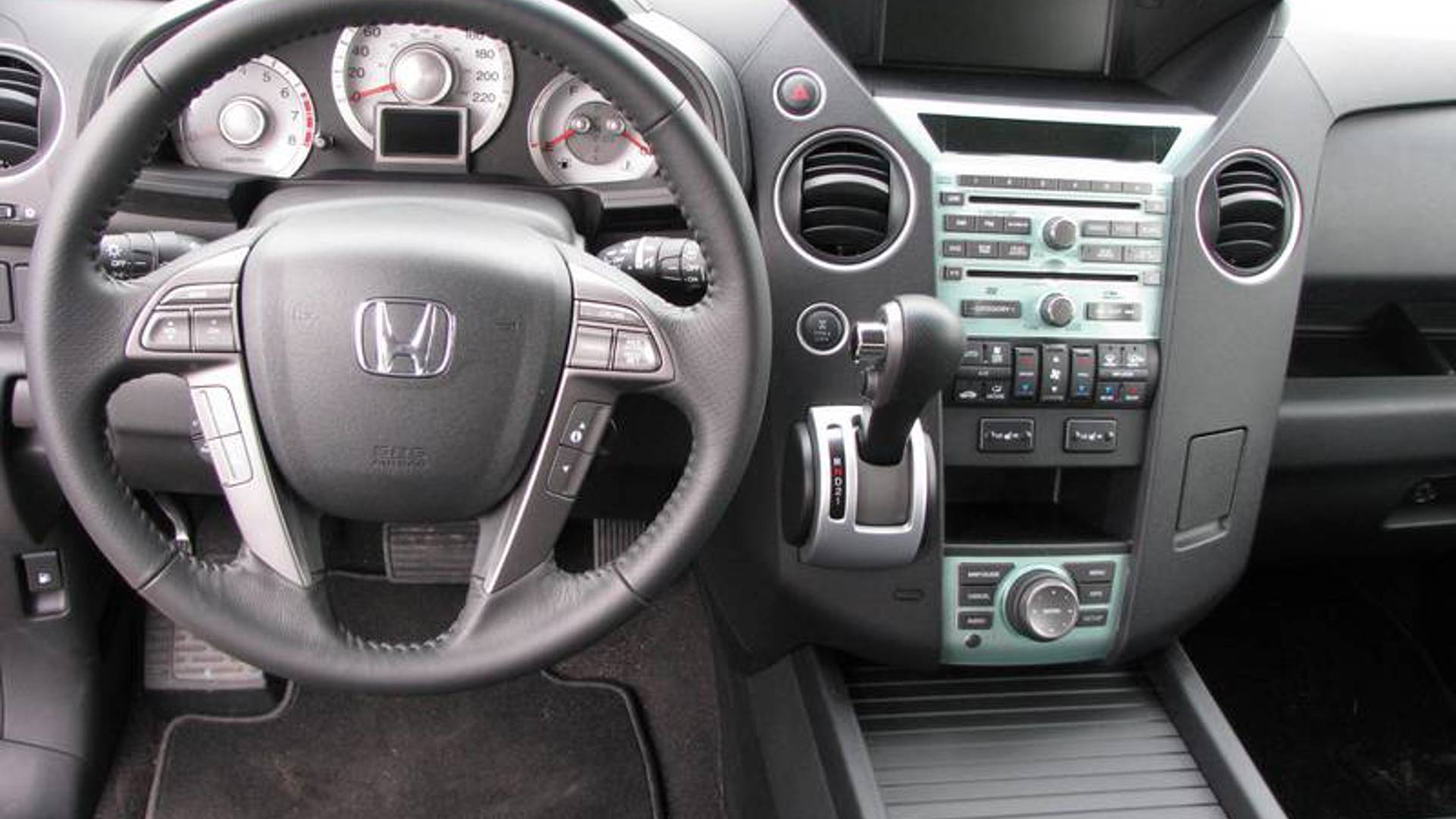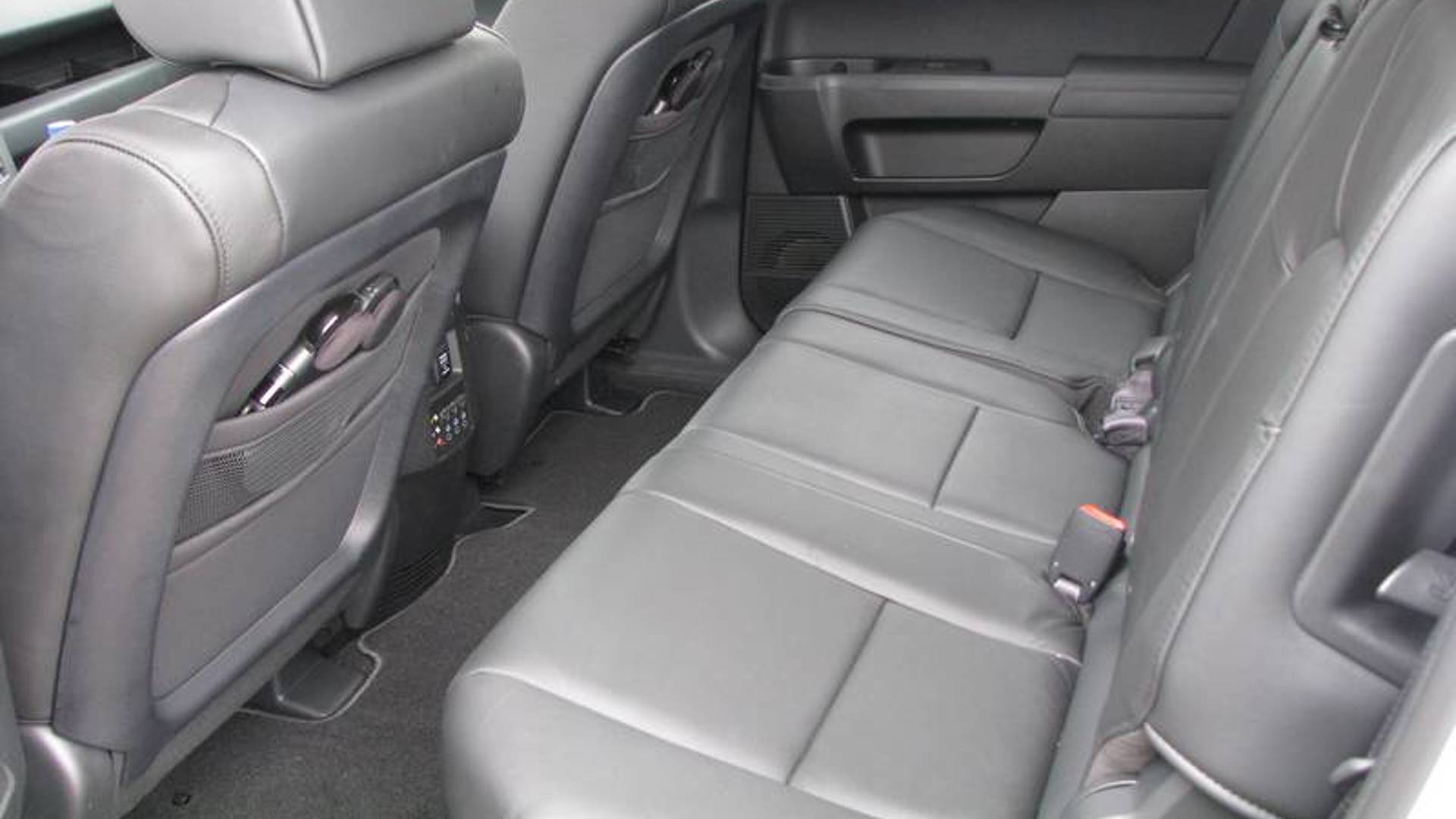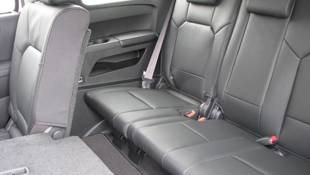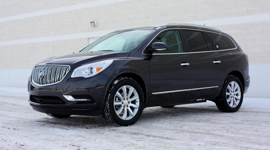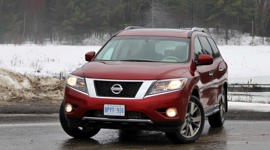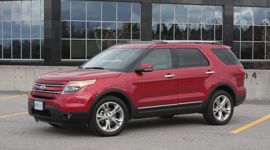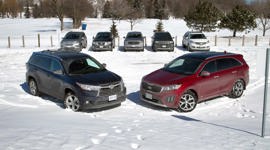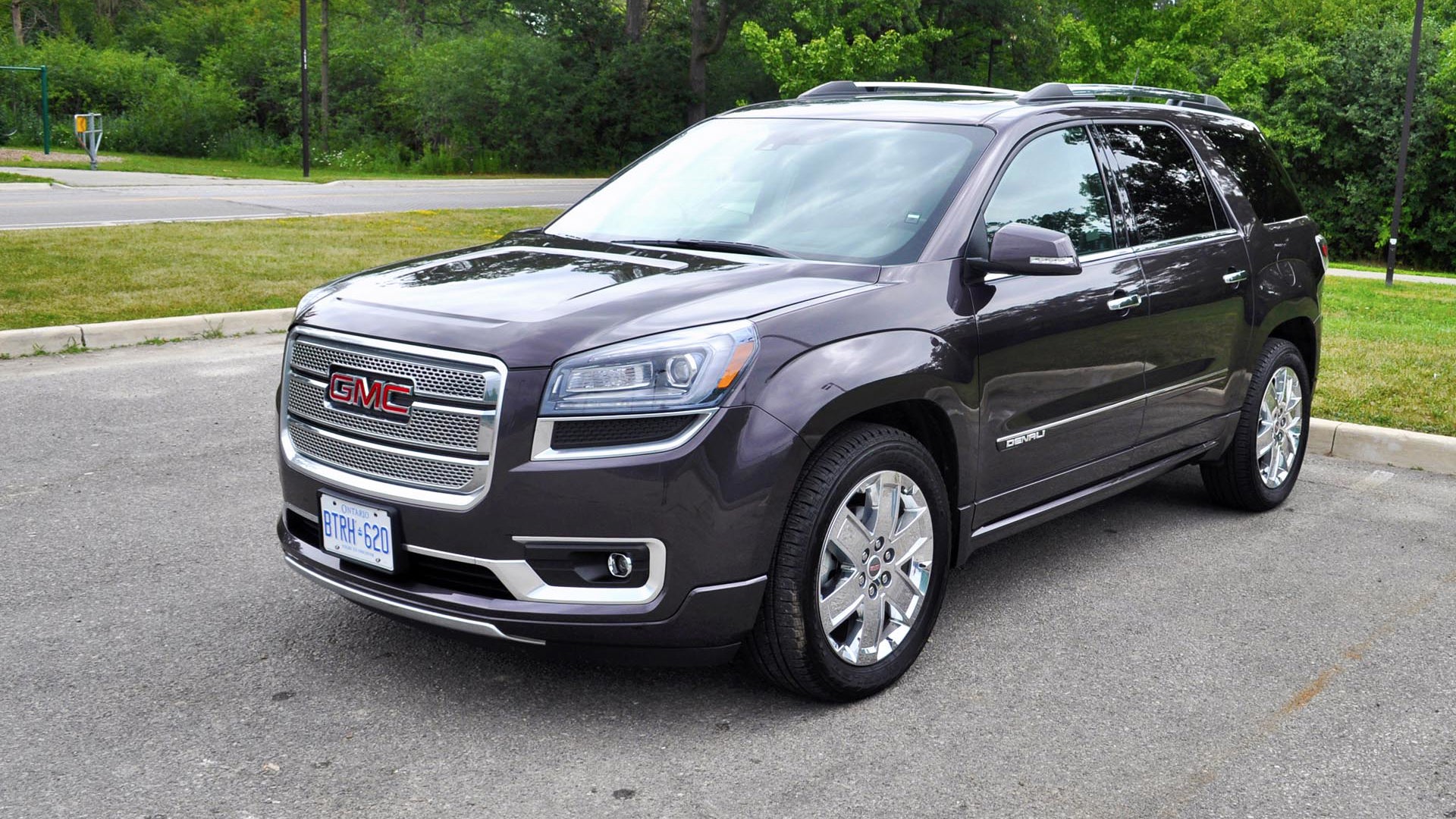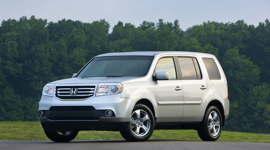If you’re the car-buying decision-maker for a family, and if you’re looking for a used family hauler ride, our research tells us that you’re probably looking for a mid-size crossover, and that probably, it’s a Nissan Pathfinder, Ford Explorer, Honda Pilot, GM Acadia / Traverse, or Toyota Highlander.
Be sure to check out our extensive archive of used vehicle reviews for shopping tips and test drive information on any used ride you’re considering that’s not covered below.
Below, we’ll take a glance at each of the units above, and offer some pre-purchase advice, general and specific, that applies to each. Read on for useful tips to know before your purchase, and be sure to check out our extensive archive of used vehicle reviews, for shopping tips and test drive information on any used ride you’re considering that’s not covered below.
2013–2017 Nissan Pathfinder
The Gist
The latest-generation Pathfinder launched for model year 2013, marking a drastic departure from former Pathfinder units, with a lowered ride height and ditching the truck-frame construction. Less off-road-oriented and more on-road- and family-friendly, the Pathfinder got softer and less capable, but also more efficient and more spacious. The market responded favourably, and sales exploded. Look for standard V6 power, selectable four-wheel drive with a Lock mode on most models, and the latest in safety, connectivity, and comfort-oriented feature content. Three generous seating rows and easy-to-access rear seats rounded out the package. All units ran a Nissan Xtronic CVT transmission for smooth and efficient performance.
The Checks
Think “transmission” on your test drive, scrutinizing the operation of the CVT in various conditions and at light, moderate, and heavy throttle. In the rare case you experience any clunking, failure to respond to throttle inputs, strange noises, or harshness, be double-sure to have the transmission on the vehicle you’re considering inspected by a dealer technician before purchase. Working with a dealer (they’ll need the vehicle’s VIN number), confirm that all software updates and any updated or revised transmission parts that may be available are installed. Some models got an extended transmission warranty, to cover possible problems. Do not assume this is the case – have a dealer check.
During ownership, have the CVT fluid changed not a moment later than specified in the owner’s manual, earlier if possible. This should only be done at a Nissan dealer: if a lube-shop technician doesn’t follow a very specific drain-and-fill procedure, or use a specific fluid to refill the transmission, headaches are likely.
Elsewhere, very sluggish performance may be the result of a bad brake-pedal sensor switch, which may tell the vehicle that the brakes are applied, even if they’re not, thereby limiting engine power. This is an easy problem to fix, if detected.
Shoppers are also advised to have the Pathfinder’s transfer case inspected for fluid leaks, to triple-check proper operation of the motorized tailgate (if equipped), to confirm proper operation from all power windows and locks several times, and to confirm adequate performance of the climate control system on all temperature and distribution settings. Poor heater performance is likely the result of a bad damper in the climate control system, a clogged cabin air filter, or a bad thermostat.
Pro Tip
Buying a used crossover that’s still under factory warranty? Be sure that it actually is, by asking to see all service records. The seller may have stored these, and a servicing repair shop or dealer may be able to pull them up. Failure to properly maintain the vehicle in a timely manner can void its warranty, say, if the seller skipped an oil-change or service item. Confirming that the vehicle’s warranty is in good standing before you buy is a great way to prevent future surprises, should a warranty claim be needed.
2008–2013 Toyota Highlander
The Gist
The Highlander is the Toyota of family-hauler crossovers – that is, one bought largely for its promise of reliability, safety, durability, and high resale values. Expect to pay a premium for one of these in the used marketplace, but keep it in tip-top shape, and you’ll be able to get top-dollar back for it when it’s time to trade in in a few years. Units in this generation could be had with six- or seven-passenger seating, two- or four-wheel drive, and most came with standard V6 power – though some models will run a 2.7L four-cylinder engine. Look for up to 270 hp with the V6, and feature content like a JBL audio system, push-button start, rear-seat DVD consoles, automatic climate control, navigation and more. Top-line models were called Highlander Limited, and a gussied-up Highlander Sport was available, too.
The Checks
Highlander looks like a solid used crossover bet, but like all crossovers, is a machine built of parts and components that can ultimately wear out, fail, and require attention. Most owner-reported issues centre around minor gripes, like worn-out, ripped or peeling/cracked arm-rest covers, and centre console lids, or faster-than-expected wear of the seating surfaces on some models.
Check the Highlander’s headlight and taillight housings for signs of moisture buildup inside, which can cause problems and reduce lighting performance and visibility. Check the power tailgate several times, too, noting that any failure to operate as expected, or an unexpected reversing in direction, can be caused by shifting hinges or a bent tab or tabs in the tailgate assembly. If this part of the Highlander you’re considering needs repair, call it into pricing negotiations, and have the dealer reference Technical Service Bulletin TSB-0091-12 for more information.
Earlier models from this generation, particularly from 2008, should be inspected for possibly leaky oil-lines that drive the engine’s valve-timing system. In other applications, these oil lines could rupture or leak, causing a mess, and possible engine damage. It’s unlikely many of these engines made their way under the hood of many Highlanders, making this an unlikely but potentially serious issue that’s still worth being aware of.
Other checks should include an inspection for leaky oil-cooler lines, and proper functionality of the central touchscreen interface, for maximum peace of mind.
Pro Tip
Should you purchase add-on warranty coverage, or not? Some top-line warranty packages can cost $1,200 or more, and cover you for most repairs and issues for a period of time. But consider this: skip buying the warranty, and stick that $1,200 in your bank account. This way, if you need a repair, you’ve got $1,200 to put towards it, and if you don’t need a repair, you’ve got $1,200 you can put towards something else.
2011–2017 Ford Explorer
The Gist
Ford launched the current-generation Explorer for model year 2011 with new features, styling and powerplant options. Most used models pack V6 power, though a four-cylinder EcoBoost engine was available. Front- or all-wheel drive (AWD) could be specified, so if you’re set on a unit with AWD, be sure to confirm that the unit you’re considering has it. Available with three seating rows, Explorer was flexible, accommodating, and designed for easy adaptation to the needs of a growing family. Look for dual moonroofs, Ford Sync, interior mood lighting, hands-free parking, and more. Explorer will appeal well to the shopper after space and flexibility, with a healthy dose of added feature content, via its available high-tech add-ons, including Ford Sync and various advanced safety features.
The Checks
Ahead of your test drive, plan to set aside about 20 minutes to go through all of Explorer’s electronic systems – confirming proper operation from all door locks, keyfobs, power windows, motorized seat adjustments, the power tailgate, and the rear-view camera and parking assist systems, as equipped. The Ford Sync system should be given a good workout, once test drivers pair their smartphone, too. Confirm that the climate control system works on all temperature and distribution settings, in each seating row. If the unit you’re considering has rear-seat entertainment provisions, now’s the time to confirm that they’re in proper working order, too.
Especially on 2015–16 models, coax a clunk from the Explorer’s front end by turning the steering wheel during light acceleration or braking, multiple times, at fairly low speeds. If a clunk or popping sound is detected, possibly accompanied by a detectable tapping sensation from beneath your feet, the unit should be inspected for bad subframe bolts, which may be covered by warranty. A clunk when steering is applied with the Explorer parked could indicate a problem with strut mounts, too. For maximum peace of mind, a full suspension and front-end check is advised.
Have the AWD Explorer’s Power Take-Off Unit (PTU) inspected professionally for signs of leaks, and have the fluid level checked. Some owners intentionally over-change the fluid in this driveline component to enhance durability. This is a good idea.
Pro Tip
If the Explorer, or any other crossover you’re considering, displays multiple warning messages relating to the ABS, traction control system, cruise control system, or advanced safety features, possibly accompanied by a Check Engine light, a likely culprit is a weak or dying battery. In many modern vehicles, low battery voltage can cause numerous niggling problems with a multitude of vehicle systems. If numerous electronics problems are noted, the vehicle’s battery and charging system are prime candidates for further inspection. As a trickle charger can maintain battery voltage at proper levels, using one while your vehicle will be parked for more than a few days is also advised for many shoppers.
First-Generation GM Lambda Platform Crossovers
The Gist
The first generation of GM’s new wave of crossover models launched in 2007 and 2008, and included no less than four models built on the same platform and powertrain: The Chevrolet Traverse, GMC Acadia, Buick Enclave, and Saturn Outlook. Lambda platform models have all been replaced with second-generation units in recent years. Look for standard V6 power, all-wheel drive (AWD), OnStar, Bluetooth, navigation, a head-up display (HUD) and room for up to eight occupants, depending on the model selected. Top safety scores and plenty of cargo space helped these machines appeal to shoppers who needed plenty of versatility and space. All units ran a 3.6L V6 engine which underwent several revisions across the life of these models. Owners reported a comfortable and car-like ride, as well as added confidence in bad weather on models with AWD.
The Checks
After confirming proper operation of all electronic systems, the air conditioner, the remote start (if equipped) and the Bluetooth and OnStar interfaces, shoppers are advised to check the outer front corners of the ceiling liner, and the outer front corners of the footwell carpeting, for signs of moisture or mildew which could be caused by a leaky drain tube. This issue seems to have been corrected in assembly after 2008.
Hard, clumsy or harsh shirting from the transmission typically requires reprogramming of the transmission’s computer brain, though shoppers are advised to have a GM technician check the transmission if any issues are detected, just to be sure. A technician should also check the underside of the Acadia for fluid leaks from the shocks, transmission, engine timing covers, and AWD system components, and to confirm that the CV axle boots are in good shape.
While the vehicle is parked, turn the steering wheel from one side to the other, with the hood open and the windows down. You’re listening for a loud whining sound, similar to an overloaded power saw, which could indicate a problem with the steering system that should be investigated as soon as possible.
Have a diagnostic scan completed before your purchase, whether or not a Check Engine light is illuminated. This scan can reveal a multitude of potential issues with the powertrain, some of which may be related to a well-documented issue with timing chain stretch and failure on earlier models from this generation. By and large, it seems like timing-chain related issues with this engine were corrected with revisions to the powerplant after a few years of production, so we advise you opt for a 2010 or newer unit where possible. The revised powerplants also got direct injection (DI), for improved power and mileage.
Pro Tip
Is the crossover you’re considering running a direct-injection engine? If so, keep three things in mind for maximum engine life and minimal problems. First, fuel religiously with Top Tier (but not necessarily high-octane) fuel, from a reputable fuel retailer. Second, change the spark plugs not a moment later than the factory specified intervals in the owner’s manual. Third, talk to a dealer about periodic intake cleaning, perhaps on an annual basis. All of these steps can help to mitigate the intake valve gunk deposits that this type of engine may be prone to.
2009–2013 Honda Pilot
The Gist
The second-generation Honda Pilot combined award-winning safety and residual values with space to spare, blocky and rugged styling, and a proven and highly effective V6 engine. Look for room for up to eight passengers via three seating rows, 250 standard horsepower, and a four-wheel drive system with locking mode fitted as standard to most models. Up-level audio, climate controlled seats, Bluetooth, navigation, a power tailgate and automatic lights were all on the options list. The LX and SE models were entry and mid-grade units, while the EX-L and Touring models were top-line in the model range. You’ll probably pay a premium for a used Pilot in the marketplace, though a strong reputation for largely trouble-free motoring has proven worth the cost for many shoppers.
The Checks
Start by scrutinizing the condition of all leather seating surfaces, including those in the second and third seating rows. Flip, fold, and slide all seats through their paces, confirming that all latches, tracks and releases, as well as motorized adjustments, are working properly.
Be on the lookout for brake system wear, with a squealing sound during braking, or a soft and mushy brake pedal feel, being top signs that the unit you’re considering may need attention to its brakes. Some owners have reported poor durability from factory brake components.
An in-the-air inspection by a technician is advised to check for leaks from the radiator, the transmission and associated cooling lines, and a full suspension check. During the suspension check, have the attending technician carefully inspect the lower front control arm bushings for signs of rips, cracks, or leaks, which indicate the need for replacement.
A growling or groaning sound, accompanied by a dull vibration from the Pilot’s engine compartment at low and steady engine speeds (e.g. while cruising) could indicate the need for revised programming to control the electronic motor mounts. The engine mounts are intended to mitigate the driver’s perception of these sounds and vibrations, caused when the engine de-activates cylinders in some situations to save fuel. If the system isn’t working properly, the noise and vibration may become detectable, and some owners have had luck with the installation of revised software by the dealer.
Finally, monitor your Pilot’s engine oil level religiously, as some owners have experienced higher-than-expected oil consumption, while others have experienced none. Check the engine oil level and condition before your test drive, and continue to do so regularly, every week, during ownership.
Pro Tip
Remember that it’s often the way a vehicle was maintained and treated, and not the badge on its grille, that dictates how reliable that vehicle will be for the long term. Though many manufacturers have a reputation for building very reliable vehicles, those vehicles are still machines made of parts and components that will eventually wear out, fail, and require attention. Even the most reliable vehicle on the road can be an utter trash heap as a used buy, if past owners neglected it, treated it poorly, or skipped and stretched maintenance intervals. Ask to see all service records, working with a dealer as necessary, to confirm that the vehicle has been well cared for.


